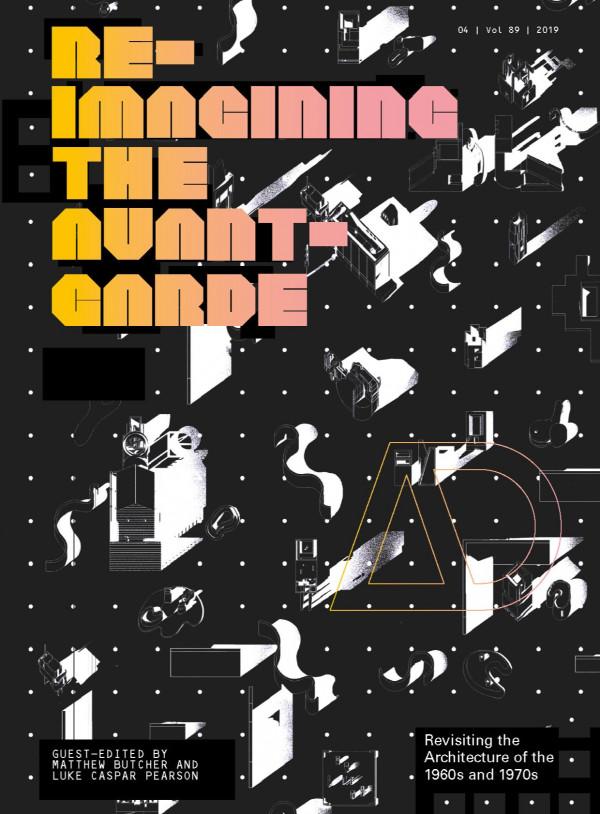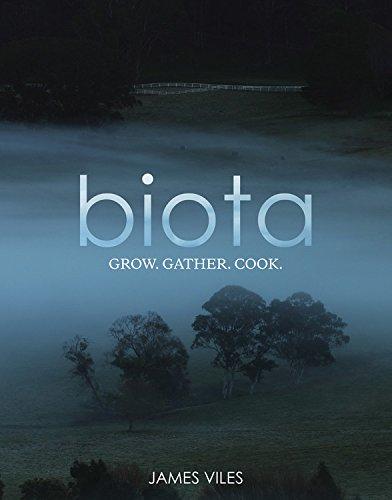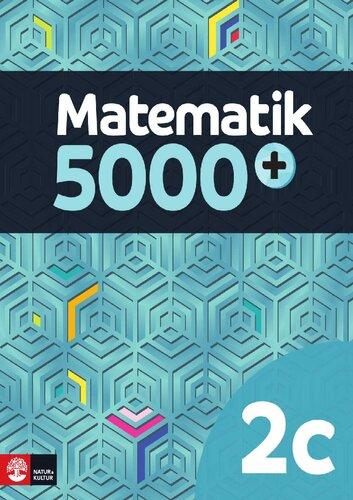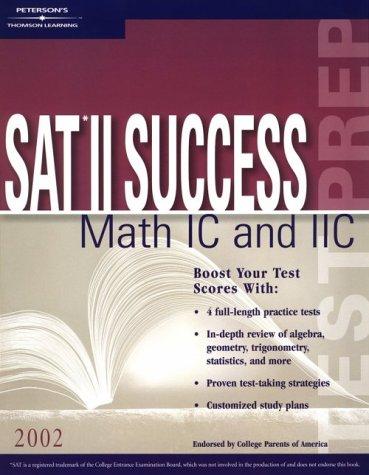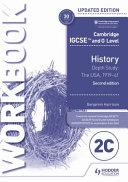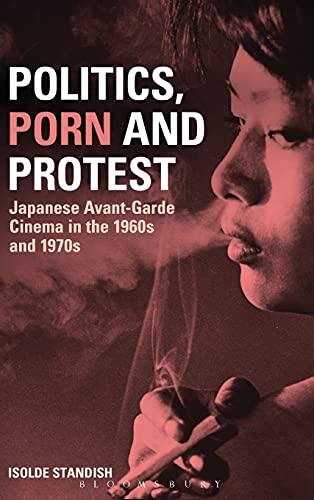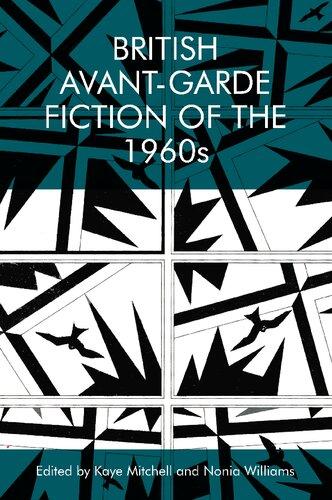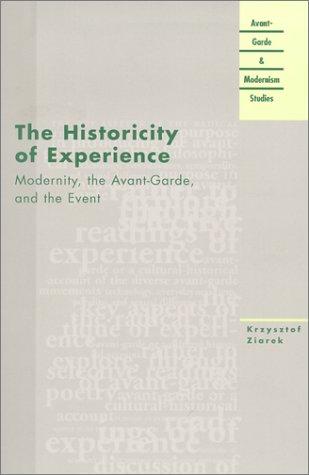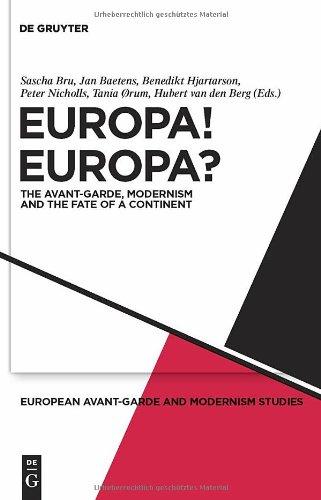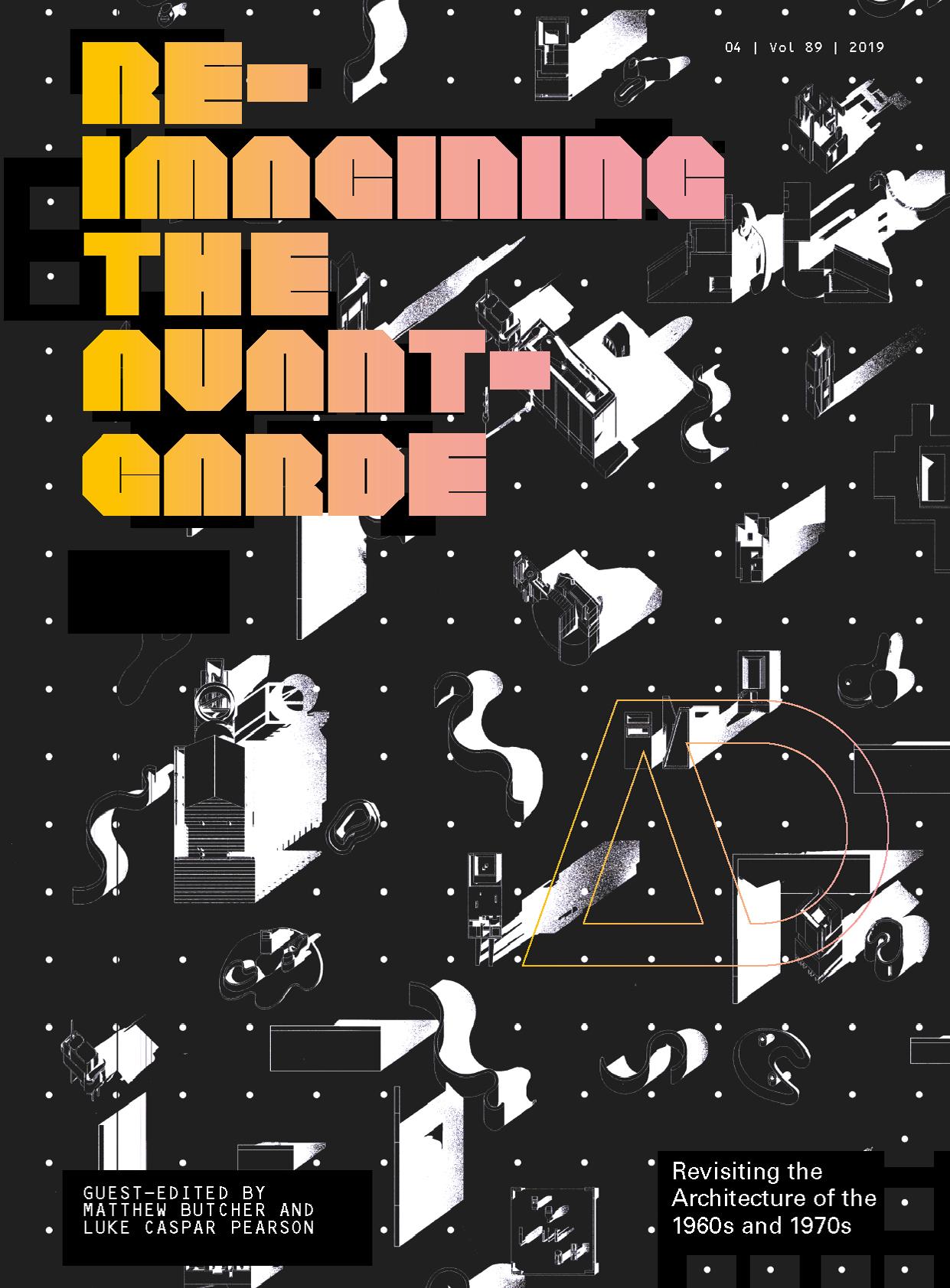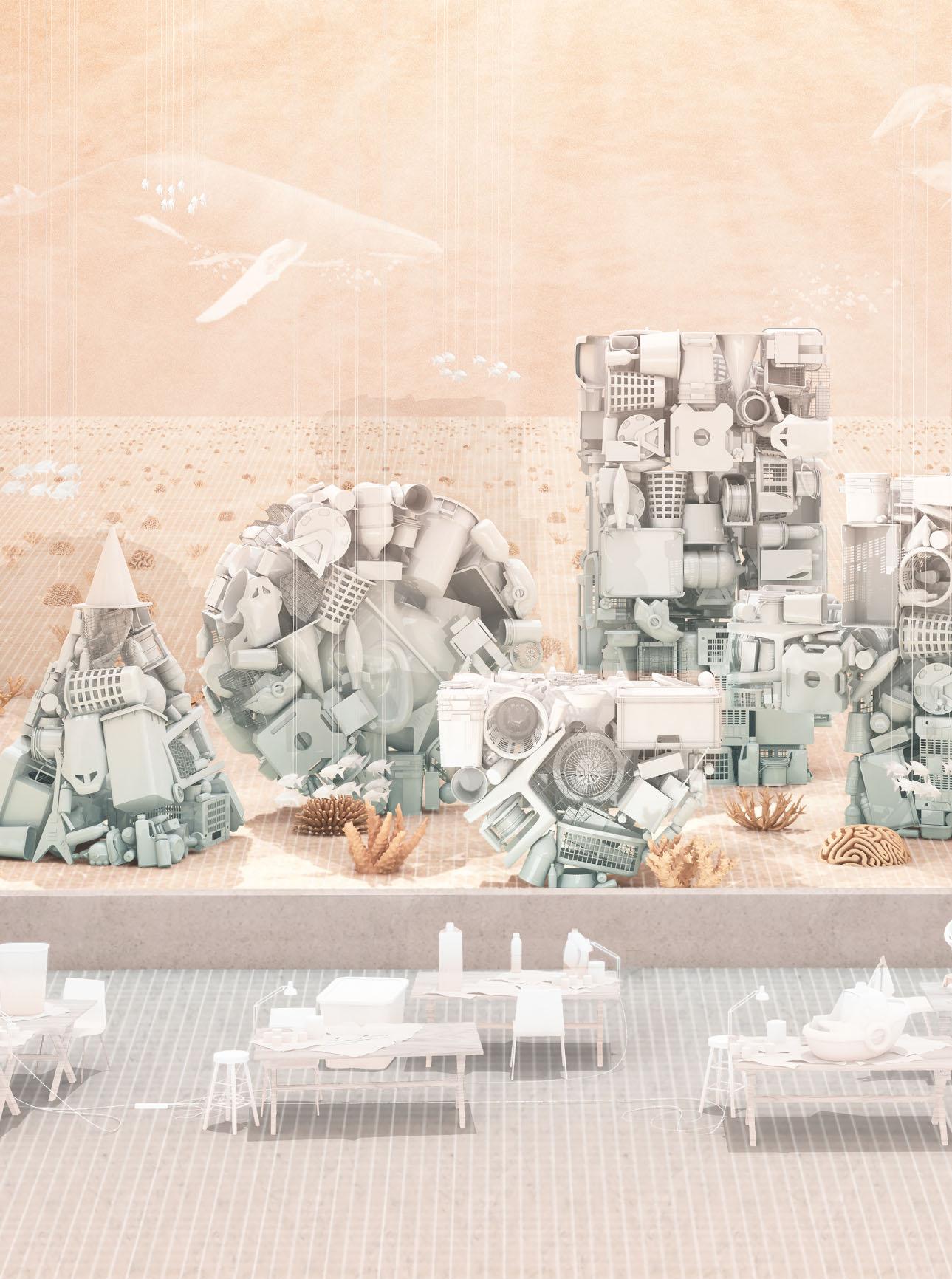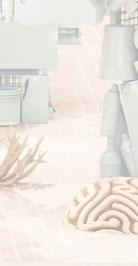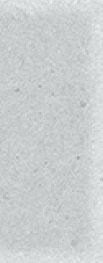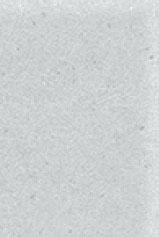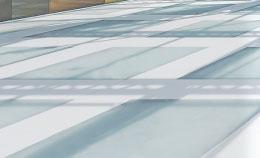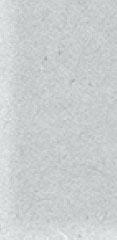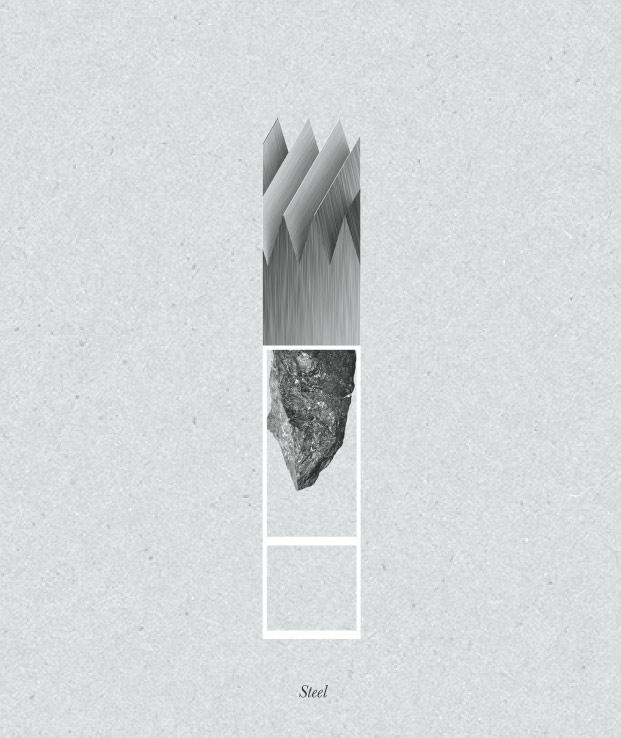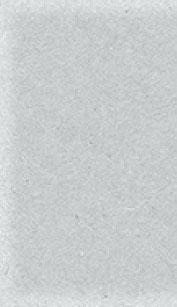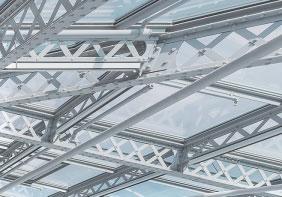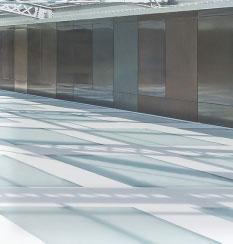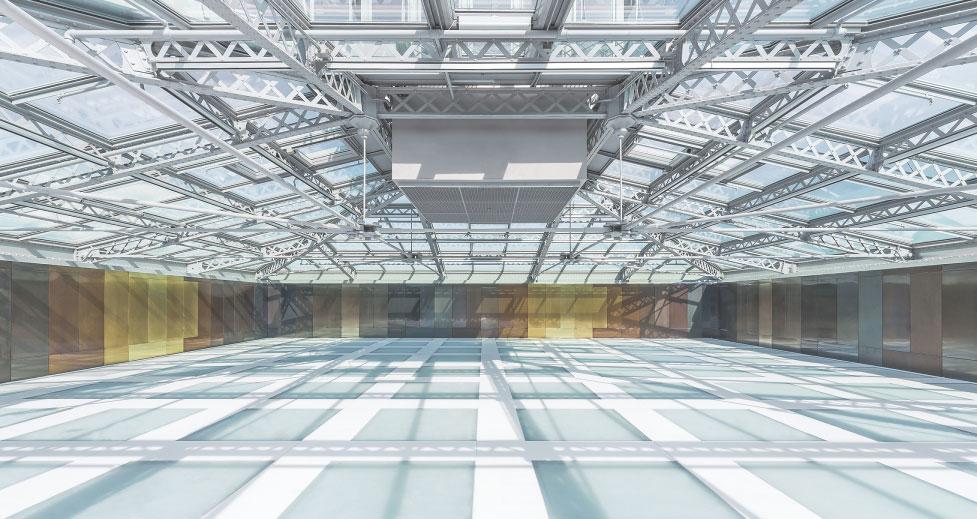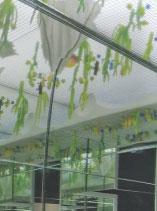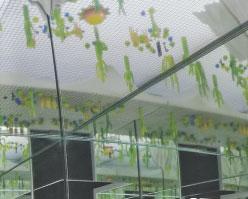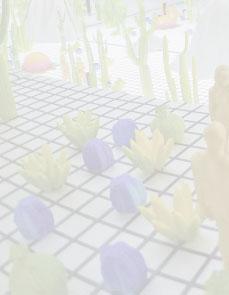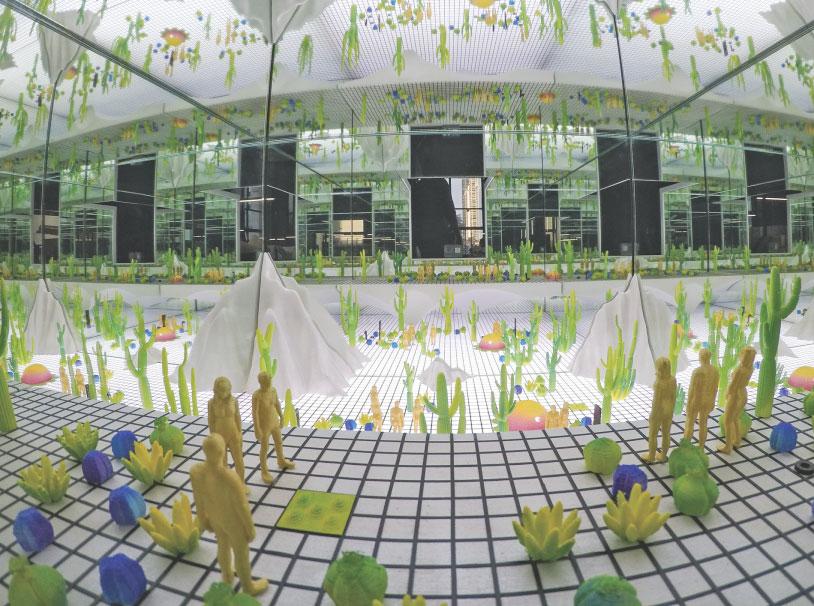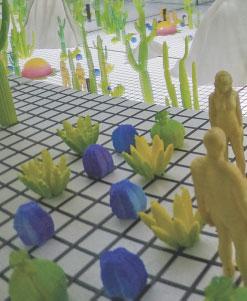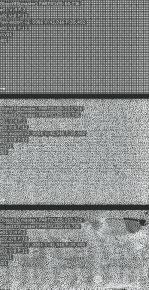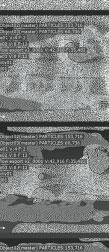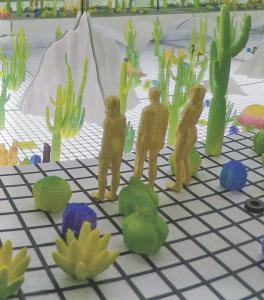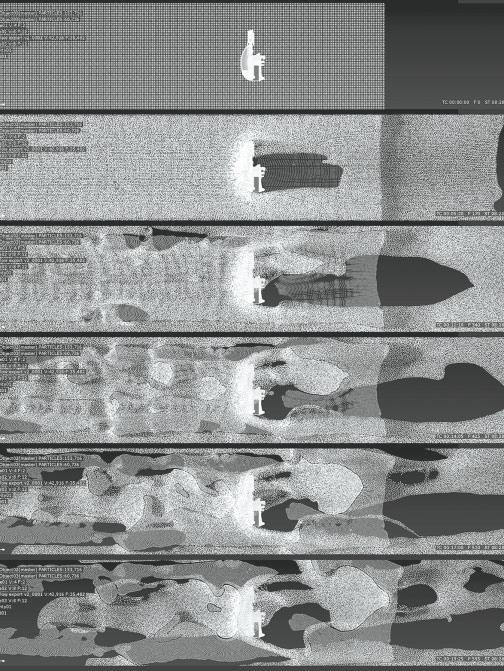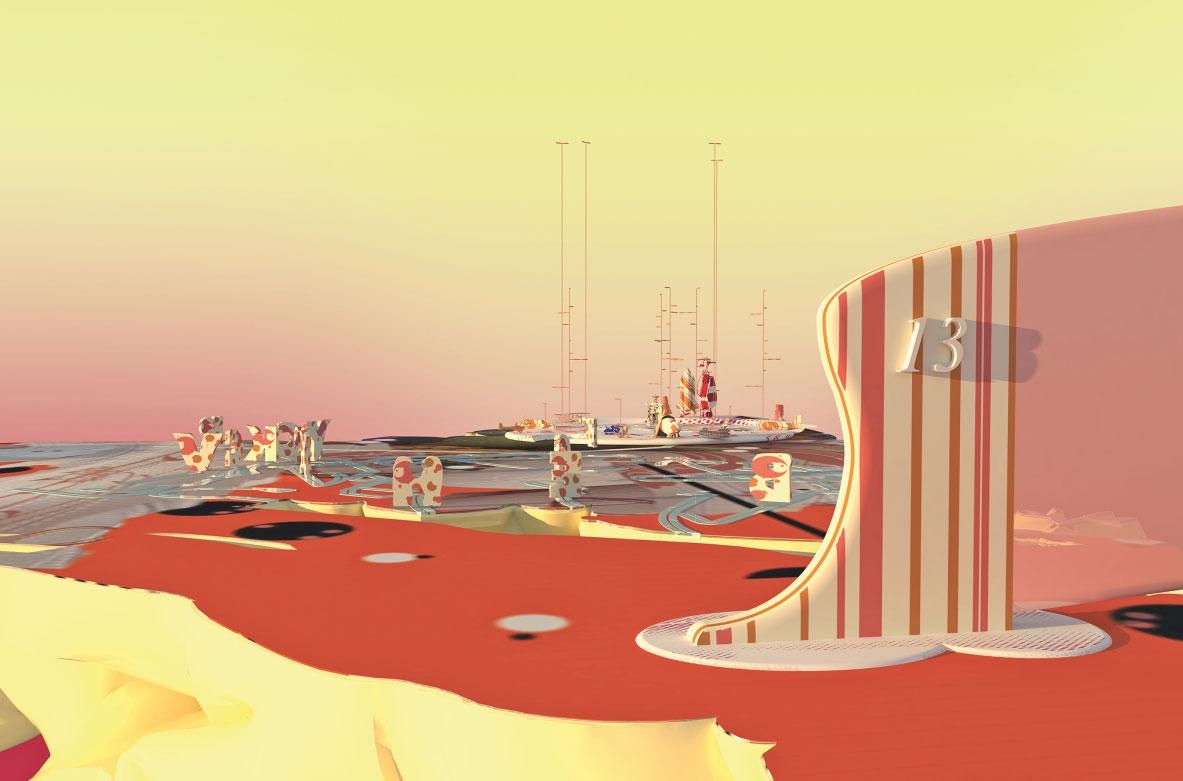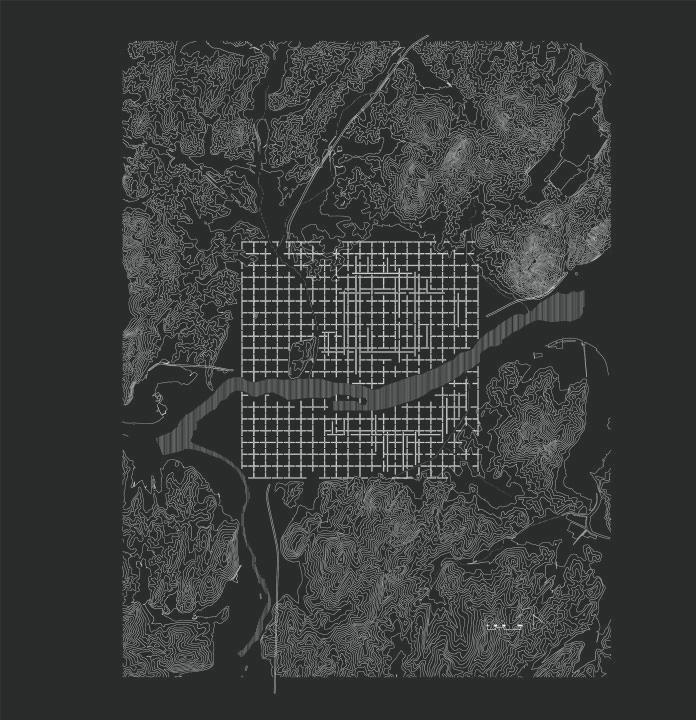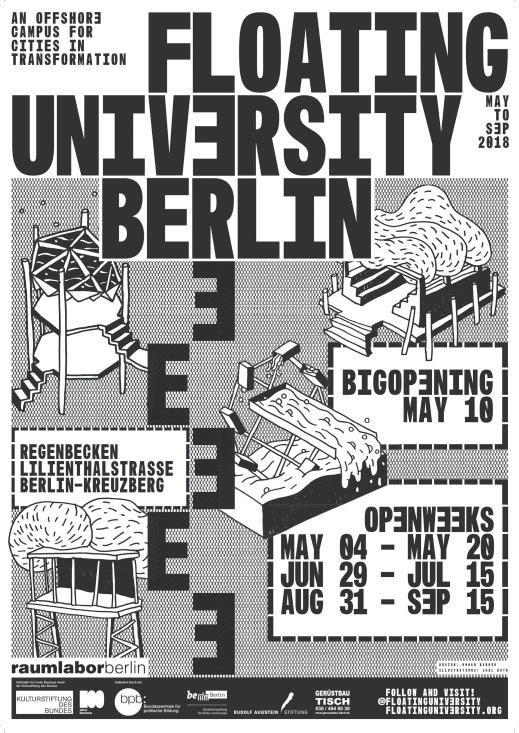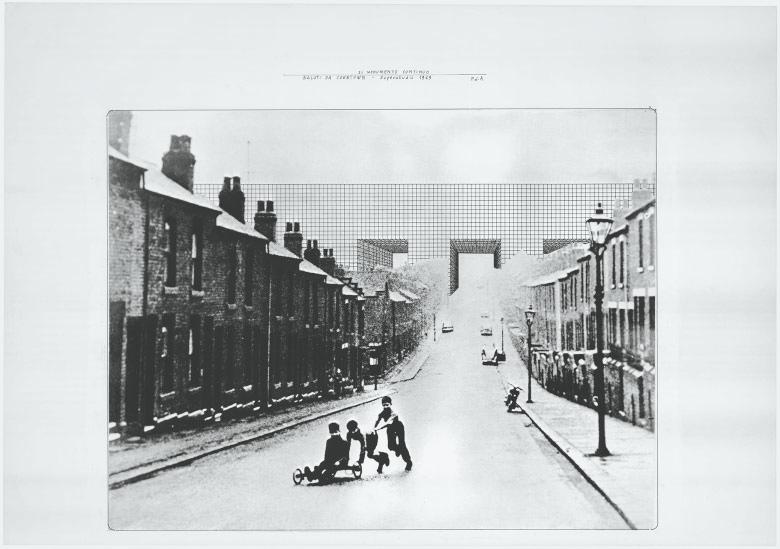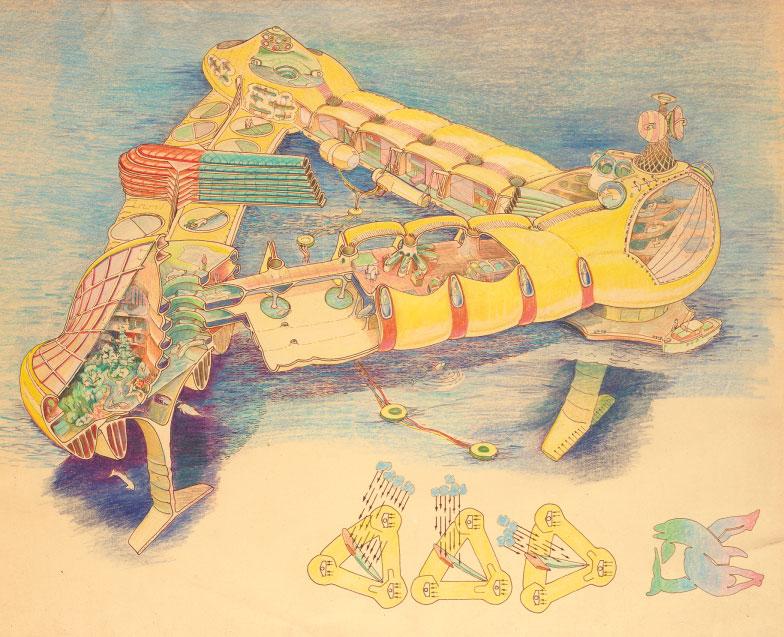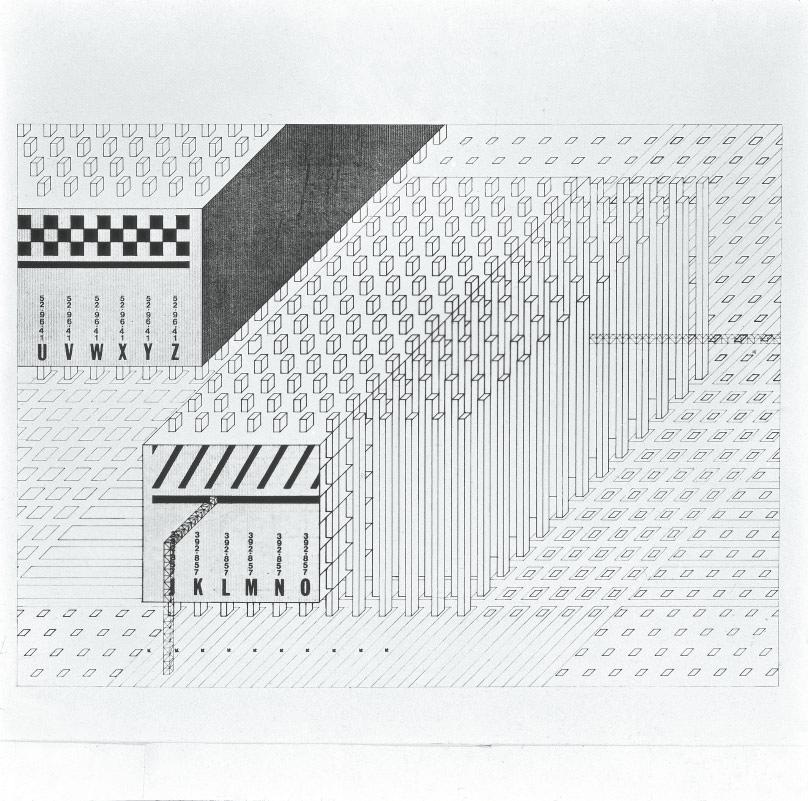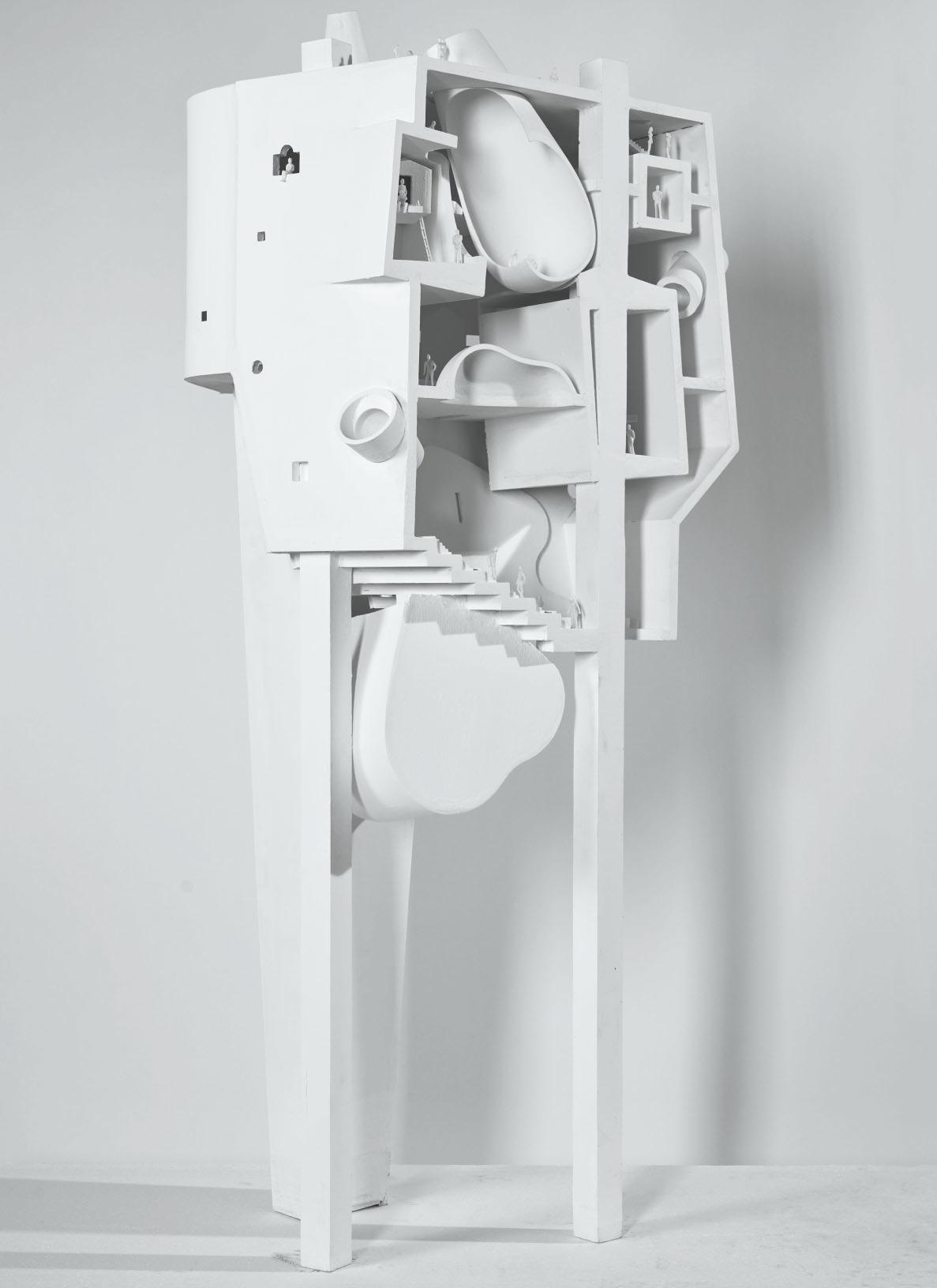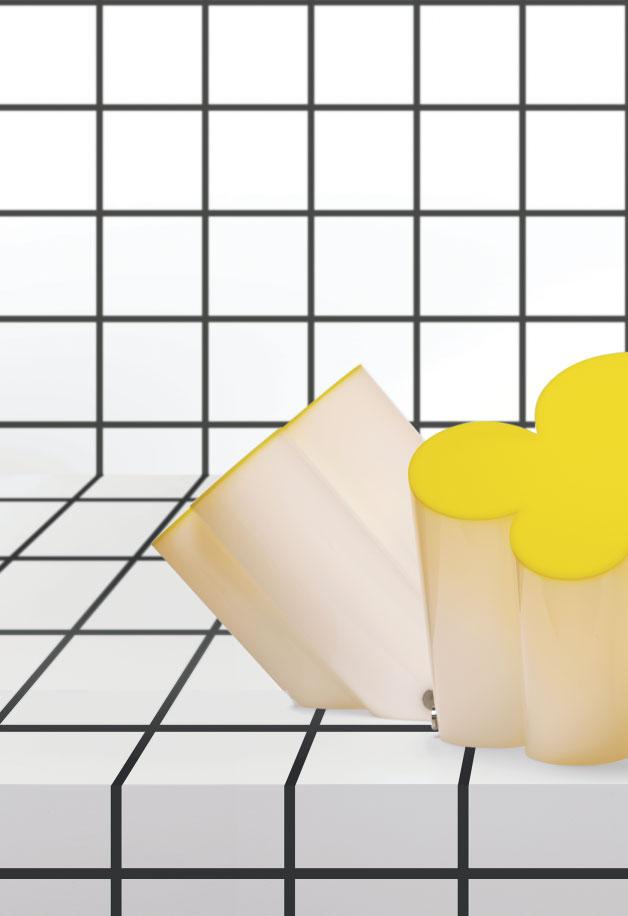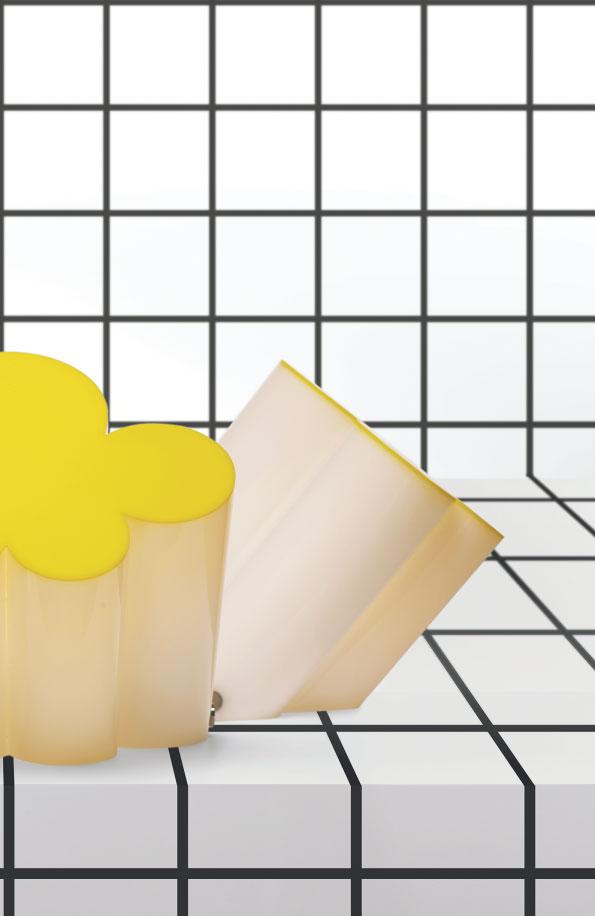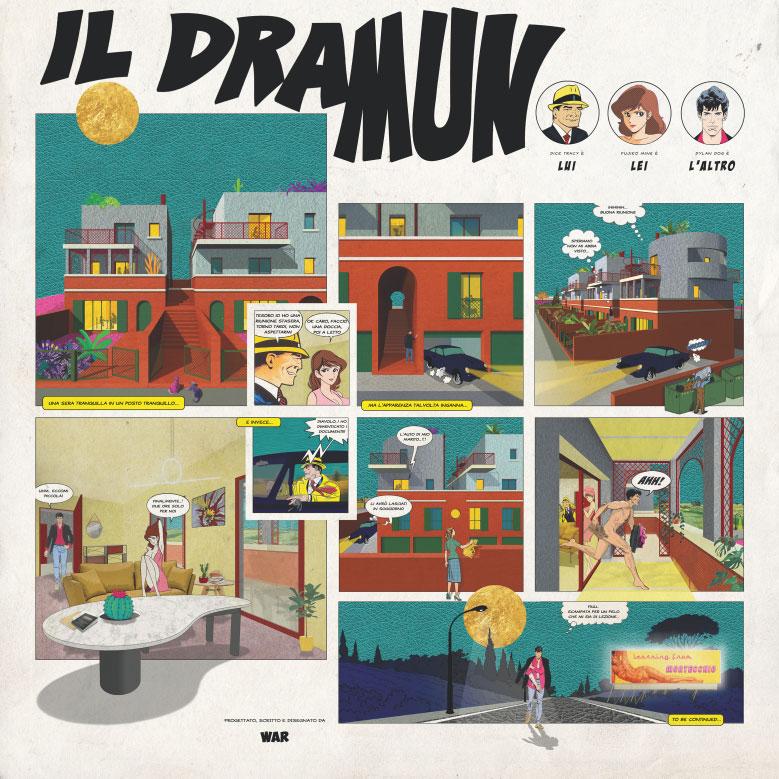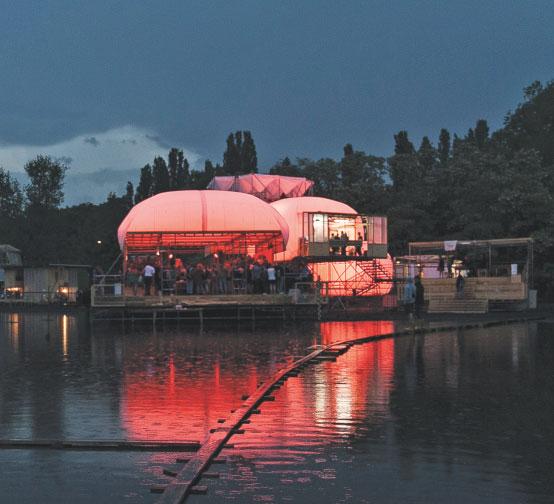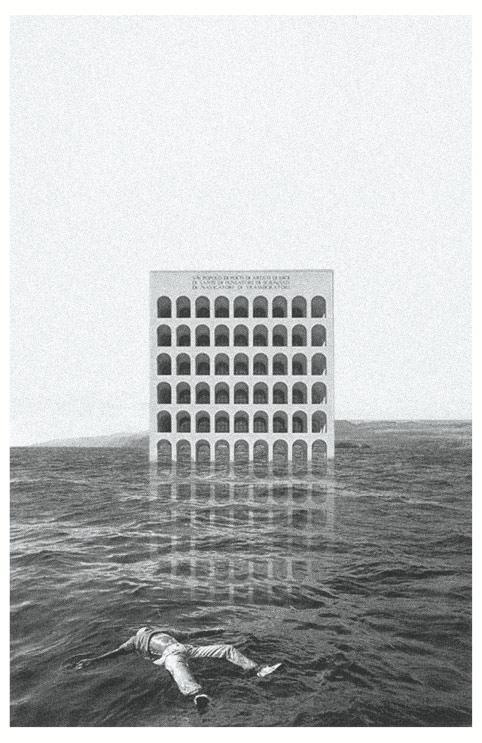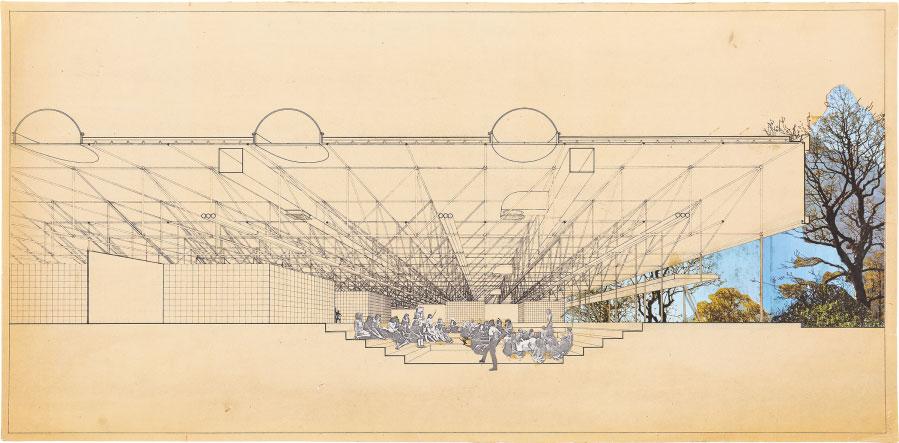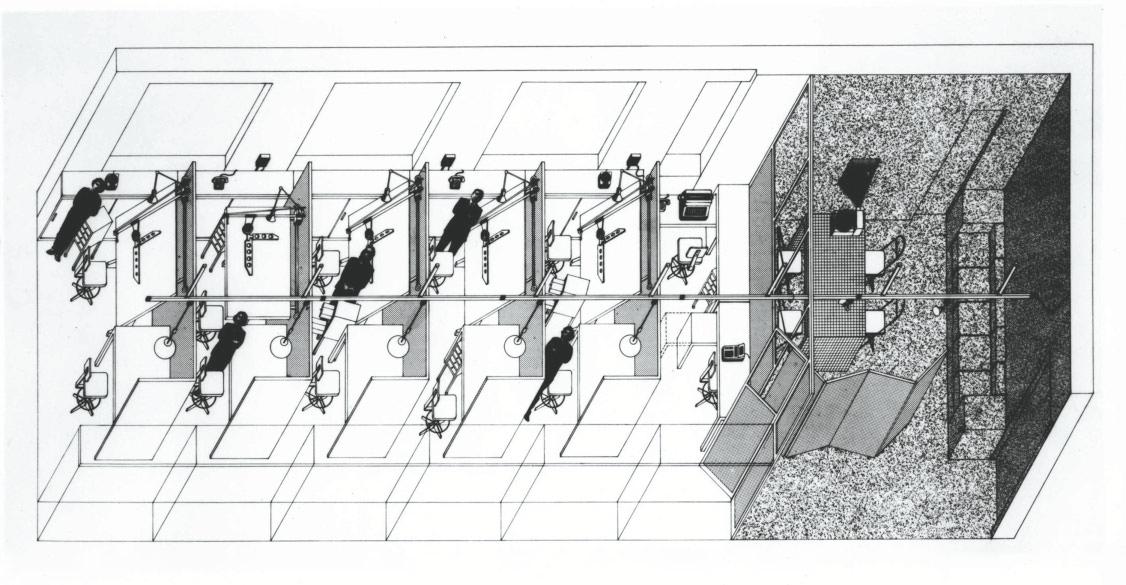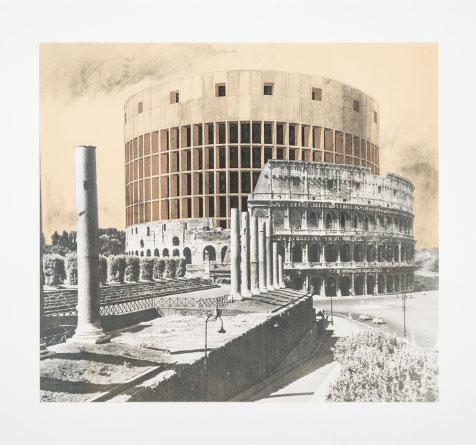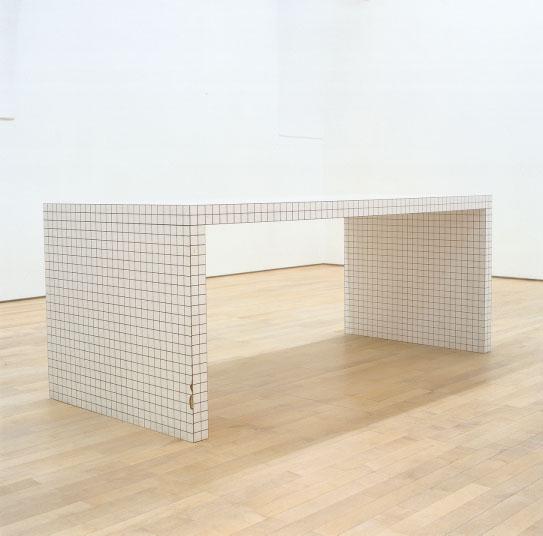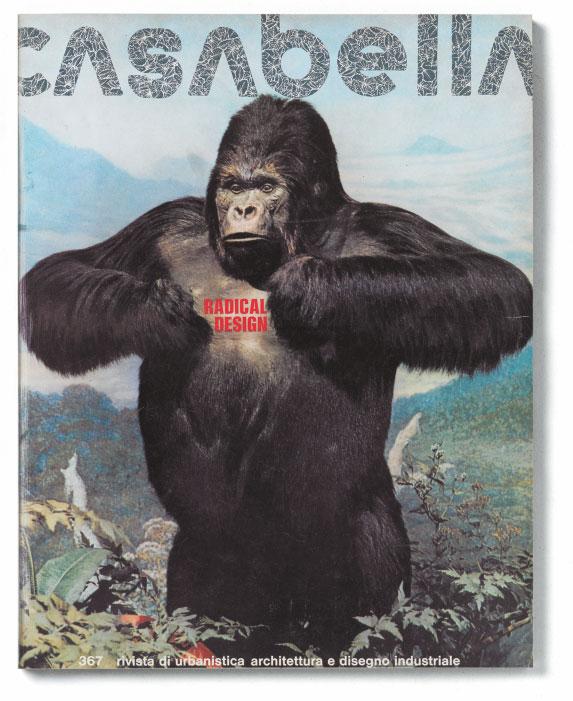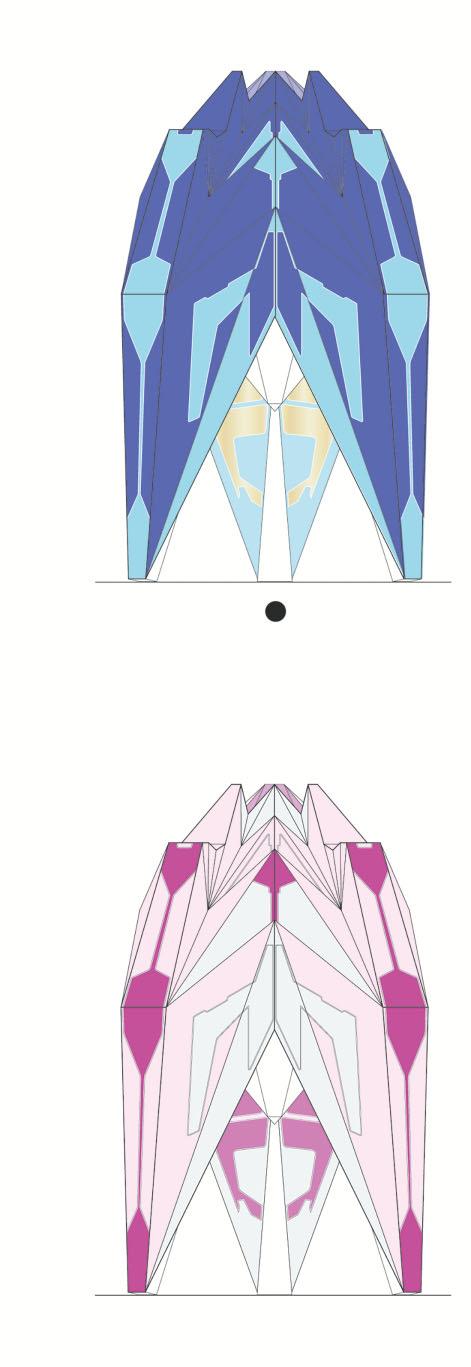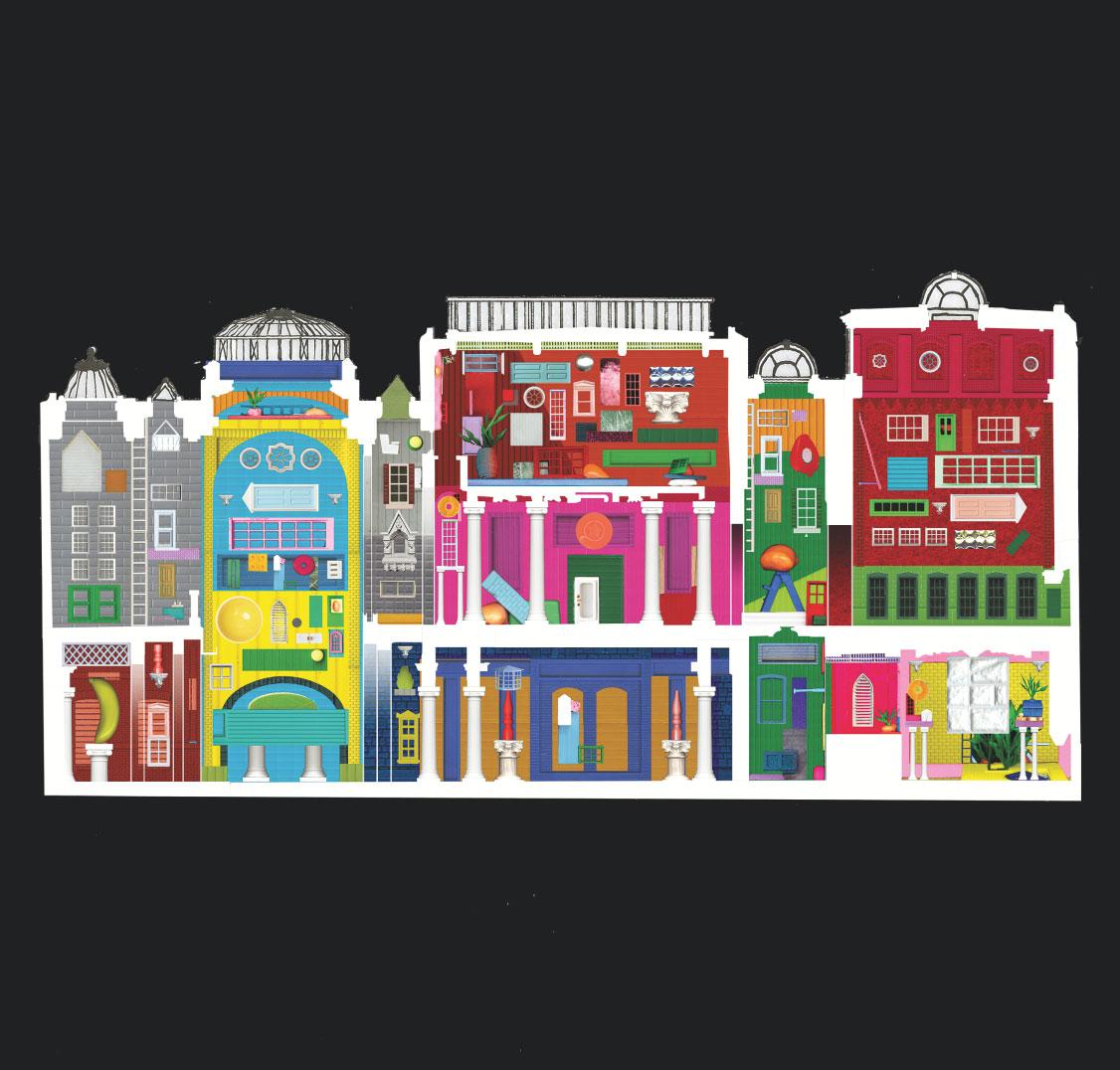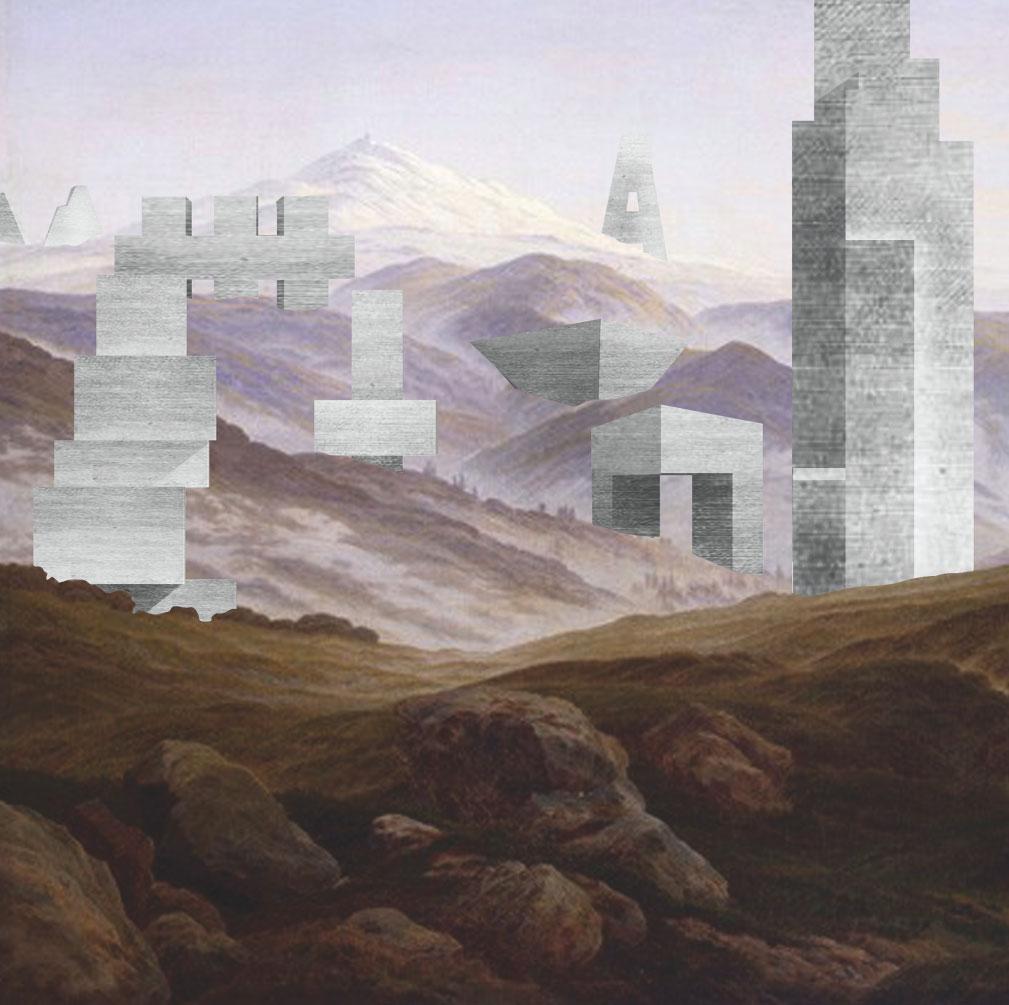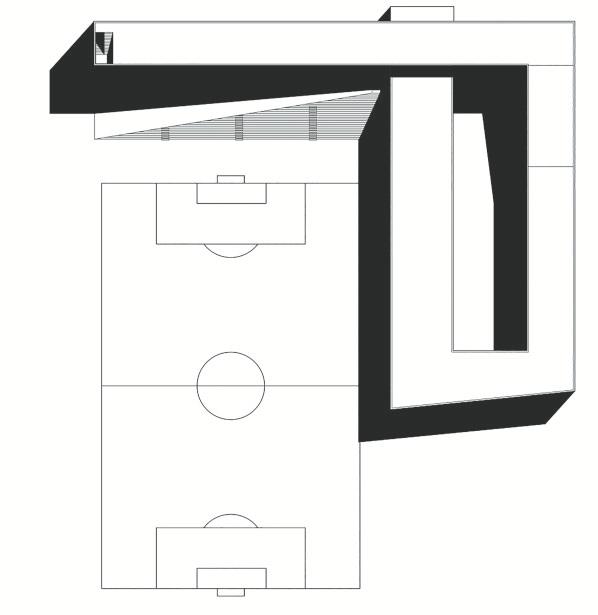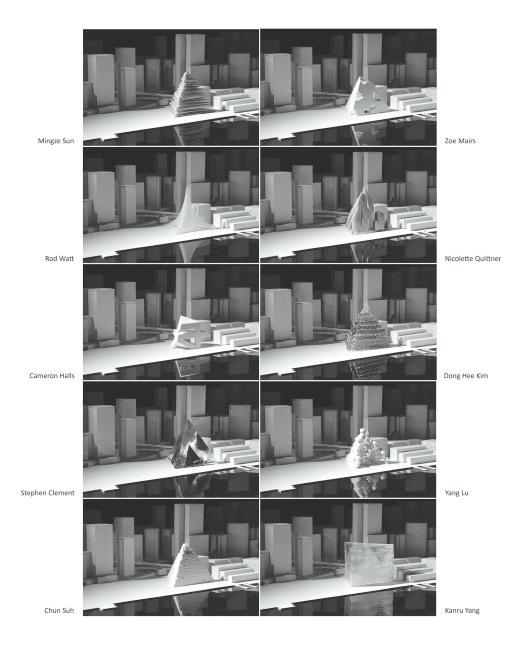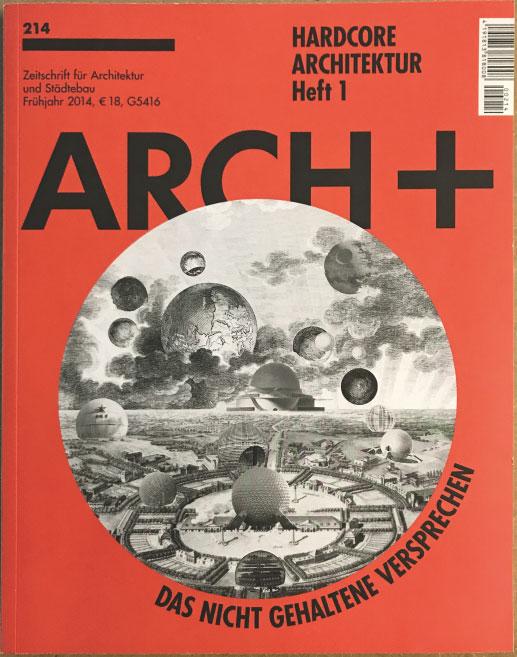(Ebook) Re-Imagining the Avant-Garde: Revisiting the Architecture of the 1960s and 1970s by Luke C. Pearson, Matthew Butcher ISBN 9781119506850, 9781119507123, 1119506859, 111950712X download
https://ebooknice.com/product/re-imagining-the-avant-garderevisiting-the-architecture-of-the-1960s-and-1970s-44927592
Instant digital products (PDF, ePub, MOBI) ready for you Download now and discover formats that fit your needs...
Start reading on any device today!
(Ebook) Biota Grow 2C gather 2C cook by Loucas, Jason; Viles, James ISBN 9781459699816, 9781743365571, 9781925268492, 1459699815, 1743365578, 1925268497
https://ebooknice.com/product/biota-grow-2c-gather-2c-cook-6661374
ebooknice.com
(Ebook) Matematik 5000+ Kurs 2c Lärobok by Lena Alfredsson, Hans Heikne, Sanna Bodemyr ISBN 9789127456600, 9127456609
https://ebooknice.com/product/matematik-5000-kurs-2c-larobok-23848312
ebooknice.com
(Ebook) SAT II Success MATH 1C and 2C 2002 (Peterson's SAT II Success) by Peterson's ISBN 9780768906677, 0768906679
https://ebooknice.com/product/sat-ii-success-math-1c-and-2c-2002-peterson-s-satii-success-1722018
ebooknice.com
(Ebook) Master SAT II Math 1c and 2c 4th ed (Arco Master the SAT Subject Test: Math Levels 1 & 2) by Arco ISBN 9780768923049, 0768923042
https://ebooknice.com/product/master-sat-ii-math-1c-and-2c-4th-ed-arco-masterthe-sat-subject-test-math-levels-1-2-2326094
ebooknice.com
(Ebook) Cambridge IGCSE and O Level History Workbook 2C - Depth Study: the United States, 1919-41 2nd Edition by Benjamin Harrison ISBN 9781398375147, 9781398375048, 1398375144, 1398375047
https://ebooknice.com/product/cambridge-igcse-and-o-level-historyworkbook-2c-depth-study-the-united-states-1919-41-2nd-edition-53538044
ebooknice.com
(Ebook) Politics, Porn and Protest: JAPANESE AVANT-GARDE CINEMA IN THE 1960s AND 1970s by Isolde Standish ISBN 9780826444707, 0826444709
https://ebooknice.com/product/politics-porn-and-protest-japanese-avant-gardecinema-in-the-1960s-and-1970s-57927546
ebooknice.com
(Ebook) British Avant-Garde Fiction of the 1960s by Kaye Mitchell (editor), Nonia Williams (editor) ISBN 9781474436199, 1474436196
https://ebooknice.com/product/british-avant-garde-fiction-of-the-1960s-43429704
ebooknice.com
(Ebook) The Historicity of Experience: Modernity, the Avant-Garde, and the Event (Avant-Garde & Modernism Studies) by Krzysztof Ziarek ISBN 9780810118355, 9780810118362, 0810118351, 081011836X
https://ebooknice.com/product/the-historicity-of-experience-modernity-the-avantgarde-and-the-event-avant-garde-modernism-studies-1767598
ebooknice.com
(Ebook) Europa! Europa?: The Avant-Garde, Modernism and the Fate of a Continent (European Avant-Garde and Modernism Studies) by Sascha Bru ISBN 9783110217711, 3110217716
https://ebooknice.com/product/europa-europa-the-avant-garde-modernism-and-thefate-of-a-continent-european-avant-garde-and-modernism-studies-1672276
ebooknice.com
Revisiting the Architecture of the 1960s and 1970s
GUEST-EDITED BY MATTHEW BUTCHER AND LUKE CASPAR PEARSON
ARCHITECTURAL DESIGN
July/August 2019
Profile No 260
Fondaco dei Tedeschi,
The Function of Utopia
Behind the Wheel
Sarah
Surrealism,
Copying as Cultural Iconoclasm
Editorial Offices
John Wiley & Sons
9600 Garsington Road
Oxford OX4 2DQ
T +44 (0)1865 776868
Editor
Neil Spiller
Commissioning Editor
Helen Castle
Managing Editor
Caroline Ellerby
Caroline Ellerby Publishing
Freelance Contributing Editor
Abigail Grater
Publisher Paul Sayer
Art Direction + Design
CHK Design:
Christian Küsters
Barbara Nassisi
Production Editor
Elizabeth Gongde
Prepress
Artmedia, London
Printed in Italy by Printer Trento Srl
Denise Bratton
Paul Brislin
Mark Burry
Helen Castle
André Chaszar
Nigel Coates
Peter Cook
Teddy Cruz
Max Fordham
Massimiliano Fuksas
Kate Goodwin
Edwin Heathcote
Anthony Hunt
Charles Jencks
Bob Maxwell
Brian McGrath
Jayne Merkel
Peter Murray
Kester Rattenbury
Mark Robbins
Deborah Saunt
Patrik Schumacher
Coren Sharples
Leon van Schaik
Claire Weisz
Ken Yeang
Alejandro Zaera-Polo
EDITORIAL BOARD
Front cover: Matthew Butcher and Luke Caspar Pearson, Re-planning of the Avant-Garde, digital collage, 2018. © Matthew Butcher and Luke Caspar Pearson
Inside front cover: Perry Kulper, Aerial Diptych Folly, v.02: Oculus, 2018. © Perry Kulper
Page 1: NEMESTUDIO, Plastic Pacific Hall, Middle Earth: Dioramas for the Planet, 2017. Courtesy of NEMESTUDIO
Disclaimer
The Publisher and Editors cannot be held responsible for errors or any consequences arising from the use of information contained in this journal; the views and opinions expressed do not necessarily reflect those of the Publisher and Editors, neither does the publication of advertisements constitute any endorsement by the Publisher and Editors of the products advertised.
Journal Customer Services
For ordering information, claims and any enquiry concerning your journal subscription please go to www.wileycustomerhelp .com/ask or contact your nearest office.
Americas
E: cs-journals@wiley.com
T: +1 781 388 8598 or +1 800 835 6770 (toll free in the USA & Canada)
Europe, Middle East and Africa
E: cs-journals@wiley.com
T: +44 (0)1865 778315
Asia Pacific
E: cs-journals@wiley.com
T: +65 6511 8000
Japan (for Japanesespeaking support)
E: cs-japan@wiley.com
T: +65 6511 8010 or 005 316 50 480 (toll-free)
Visit our Online Customer Help available in 7 languages at www.wileycustomerhelp .com/ask
Print ISSN: 0003-8504
Online ISSN: 1554-2769
Prices are for six issues and include postage and handling charges. Individualrate subscriptions must be paid by personal cheque or credit card. Individual-rate subscriptions may not be resold or used as library copies.
All prices are subject to change without notice.
Identification Statement Periodicals Postage paid at Rahway, NJ 07065. Air freight and mailing in the USA by Mercury Media Processing, 1850 Elizabeth Avenue, Suite C, Rahway, NJ 07065, USA.
USA Postmaster
Please send address changes to Architectural Design, John Wiley & Sons Inc., c/o The Sheridan Press, PO Box 465, Hanover, PA 17331, USA
Rights and Permissions Requests to the Publisher should be addressed to: Permissions Department John Wiley & Sons Ltd The Atrium Southern Gate Chichester West Sussex PO19 8SQ
UK
F: +44 (0)1243 770 620
E: Permissions@wiley.com
All Rights Reserved. No part of this publication may be reproduced, stored in a retrieval system or transmitted in any form or by any means, electronic, mechanical, photocopying, recording, scanning or otherwise, except under the terms of the Copyright, Designs and Patents Act 1988 or under the terms of a licence issued by the Copyright Licensing Agency Ltd, Barnard’s Inn, 86 Fetter Lane, London EC4A 1EN, UK, without the permission in writing of the Publisher.
Subscribe to 1 2 is published bimonthly and is available to purchase on both a subscription basis and as individual volumes at the following prices.
Prices
Individual copies: £29.99 / US$45.00
Individual issues on 2 App for iPad: £9.99 / US$13.99
Mailing fees for print may apply
Annual Subscription Rates
Student: £90 / US$137 print only
Personal: £136 / US$215 print and iPad access
Institutional: £310 / US$580 print or online
Institutional: £388 / US$725 combined print and online 6-issue subscription on 2 App for iPad: £44.99 / US$64.99
Over the last decade, Matthew Butcher and Luke Pearson have been investigating the relevance of the architecture of the 1960s and 1970s within 21st-century architectural discourse, and ways of re-imagining this avantgarde work in contemporary design practices. This has underpinned both their research and teaching practice at the Bartlett School of Architecture, University College London (UCL), where Butcher is an Associate Professor of Architecture and Pearson a Lecturer in Architecture and Director of the Undergraduate Architecture Programme.
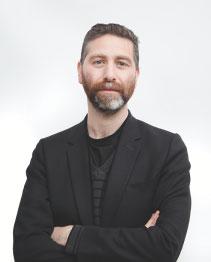

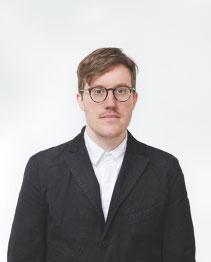

Butcher’s research investigates how the innovative practices of the architectural avant-garde – incorporating art, land art and performance – might be re-enacted to address current environmental concerns. He explores how architects can develop a greater political, empathetic and physical relationship with the environments we inhabit, over one that is augmented by technology. His work has been exhibited at the Victoria and Albert Museum (V&A) in London; Storefront for Art and Architecture, New York; The Architecture Foundation, London; and the Prague Quadrennial. Recent projects and exhibitions include 2EmmaToc/Writtle Calling, a temporary radio station in Essex; Flood House, a floating architecture developed in collaboration with Jes Fernie and Focal Point Gallery in Southend; and Mansio, a retreat for writers and poets that visited sites along Hadrian’s Wall in the summer of 2016. He is also the founder and Editor of the architectural newspaper P.E.A.R.: Paper for Emerging Architectural Research, and has contributed articles and papers for journals including ArchitectureResearch Quarterly (ARQ), the RIBA Journal and Architecture Today. He currently holds a visiting lectureship at Umeå School of Architecture, Sweden, and a visiting professorship at Genoa Technical University in Italy.
Pearson’s work explores the relationship between pop culture, technology and architectural design with reference to avant-garde projects of the past. He uses video-game technologies as new forms of architectural representation and generators of utopic environments, often adopting the analytical approaches of historical figures such as Robert Venturi and Denise Scott Brown to explore the formal composition of game spaces, for example in his doctoral research project Learning from Los Santos. He is co-founder (with Sandra Youkhana) of the design practice You+Pea, which works at the intersection of architecture, video games and experimental drawing. Recent commissions include Projectives, a video game based on Hans Vredeman de Vries’s perspectival studies; the Architecture (After Games) installation at the V&A; and Peep-Pop City, an Archizoom-inspired game responding to London’s urban morphology that was exhibited at Somerset House. He has lectured widely on this research, at the Strelka Institute, New York University Games Lab, the V&A and Asakusa Gallery Tokyo among others, and has been published in journals including the Journal of Architectural Education, Thresholds and ARQ alongside architecture and game-industry publications such as CLOG: Sci-Fi, Architects’ Sketchbooks, Heterotopias and EDGE magazine. He is also the cofounder of ‘Drawing Futures’, an international conference and book series on drawing practices for art and architecture.
As guest-editors of this issue, Butcher and Pearson have worked together to frame the avant-garde not simply as a subject for historical enquiry, but as a catalyst for new forms of architectural practice and research. This has developed from their shared belief that work from this point in time, when the conceptual project of architectural modernity was being twisted and subverted, continues to resonate ever more strongly in the face of emerging technologies. 1
Photos by Sophie Percival
MATTHEW BUTCHER
LUKE CASPAR PEARSON
How the Architectural Avant-Garde Lives On ENDURING EXPERIMENTS

The 1960s and 1970s saw a significant increase in architectural projects seeking to redefine the discipline, many of which have gone on to become seminal works. Loosely grouped together under the term ‘avant-garde’, these projects and ideologies remain highly influential today. Like the historical avant-garde of the early part of the 20th century, this ‘neo’ or ‘late’ avant-garde1 was not singular in its formal, conceptual or political ambitions. It encompassed divergent geographic and cultural situations, with a wide variety of aims, representational techniques and political views – differences that existed even among the protagonists of individual subsections such as the Italian Radical movement emerging from Florence or the Whites and Grays stationed on the East Coast of the US. Their common objective, however, was to assert architecture once again as an autonomous discipline, as a political provocateur and a means of social satire.
The conceptual and often contradictory nature of the projects lends them a timeless presence; as Pino Brugellis and Manuel Orazi argue of the Italian Radicals, ‘they are susceptible to different interpretations and meanings, without ever exhausting their explosive charge: a sort of architectural Big Bang that continues to expand today, while keeping alive the chaos of its origins’.2 The period produced reflections on issues such as the looming ecological crisis, the Vietnam War, Modernism’s increasing focus on market-driven ideals of efficiency and technology, and a shift in society to a condition of hyper-consumerism.3 For historian Marco De Michelis, this neo-avant-garde was an eclectic group of ‘architects, philosophers, and historians, whose diverse ideas were connected only by a common determination to alter the obsolete tenets of modernist practice and to reevaluate architecture in terms of the new imperatives of the postwar world’.4


Perry Kulper, El Dorado: Floating Bird Motel, 2017
Kulper’s speculative project (see also pp 68–9) establishes a familiar strangeness through the juxtaposition of distant realities in a metaphorical resort proposal for birds, employing tactical manipulations of the absurd and fantastical, rendered as richly graphic worlds. Drawing in collaboration with Saumon Oboudiyat.
This issue of 2 seeks to explore this ambition and energy in the context of contemporary architectural practice. It examines the work of the 1960s and 1970s as a historical precedent, a barometer of an experimental design ethos, framing its protagonists as instigators of new formal techniques. In doing so it illuminates the creativity inherent in methodologies that build reciprocity between this period and contemporary design cultures.
There have been many studies on the methods and motives of these historical projects. The intention of this issue is not to create a new history in the typical sense, but rather to represent how the influence of the historical avant-garde directly resonates with architectural practice some 50 years later. To understand its impact, the contributions are presented under four main themes: ‘The Avant-Garde as Precedent’, ‘The Spirit of the Avant-Garde’, ‘Utopia’ and ‘Formal Repetition’.
Dogma with OFFICE Kersten Geers David Van Severen, City-Walls project for the New Multifunctional Administrative City, South Korea, 2005
Dogma, founded by Pier Vittorio Aureli and Martino Tattara, and OFFICE Kersten Geers David Van Severen, are recognised as key protagonists of the renewed interest in avant-garde architects working in the 1960s and 1970s. The proposed project, reminiscent of Archizoom’s No-Stop City (1969–1970), presents a city of external and habitable urban rooms formed from a superstructure of walls.
The Avant-Garde as Precedent
Today, references to Superstudio, Peter Eisenman, Archizoom and John Hejduk abound. By examining the reinterpretation and application of such avant-garde positions in current practices, the aim is to elucidate shared links between contemporary architects and those who serve as a historical vanguard. Given technological developments beyond anything the avant-gardes could have predicted, which have totally reshaped everything from the production of drawings to buildings and the notion of communication itself, why do architects continue to align their work with such a specific historical period and set of languages?
To start to investigate this idea, William Menking’s article ‘Superstudio as Super-Office’ (pp 14–21) sheds light on the group’s attempt to create a radical departure from the traditional architectural office. This was not only manifest in their drawn and theoretical work, but also in a desire to build buildings, which Menking sees as a means to subvert the discipline from within – a form of operation that resonates strongly with the work of contemporary practices such as raumlabor and Assemble.
Superstudio, Saluti da Coketown, 1969
The work of radical architecture practice Superstudio and their ubiquitous gridded designs, ranging from tables and chairs to endless monuments, has become iconic of avantgarde work produced during the period. Their gridded world was a foreshadowing of our digital age, and their desire for architecture to act as artistic provocation towards the ongoing mobilisation of capital resonates just as strongly today.
raumlaborberlin, Poster for the opening of Floating University, Berlin, 2018
Presented as an anti-utopia, raumlaborberlin’s work, while influenced by radical architects such as Superstudio, moves away from grand speculative statements to focus on the physical, environmental and political conditions of where the projects are sited. The Floating University, for example, was designed as a space for discourse on the future of urban living in Berlin.
In turn, Sarah Deyong (pp 22–9) emphasises how contemporary practice has drawn heavily from the avantgarde to develop an almost evangelical and ‘hardcore’ obsession with form. Expanding Postmodernism’s desire to detach form from function, she argues that current trends see form as fluid, allowing for multiple interpretations and manipulations divorced from concerns about context, site and process.
When looking at contemporary practices’ attempts at embodying the spirit of the avant-garde, it is important to register the influence of educational institutions, and none more so than the Architectural Association (AA) in London. During the 1970s and 1980s, the AA, headed by the enlightened Alvin Boyarsky, produced a new generation of experimental architects including Rem Koolhaas, Zaha Hadid and Nigel Coates. In his article ‘Avant-Garde in the Age of Identity’ (pp 30–37), Igor Marjanovic ´ looks at the very particular culture and innovation present in the school at this time, addressing how the notions of identity being expressed there informed its design output and are still helping to define educational practice today.
Encapsulating both the stylistic and theoretical framework of this neo avant-garde is San Francisco-based NEMESTUDIO. In his interview with partner Neyran Turan (pp 38–45), architect and historian Stylianos Giamarelos reveals the importance of this period in the studio’s work, and how it has helped them to establish critical methodologies to address geographical and environmental issues in their own research and to explore new forms of architectural practice.
As a counterpoint to the celebration of, and reference to, groups such as Superstudio, architectural writer and commentator Mimi Zeiger warns of the dangers of historic reverence and reinvention without a critical
purpose (pp 46–53). Architecture must be wary of retreating to an endless ‘Groundhog Day’ of historical loops that the discipline might currently be accused of engaging with. Instead, she argues, architecture must challenge its references from within, and against other forms of practice and distinct political and social contexts.
The Spirit of the Avant-Garde
The spirit of the neo avant-gardes, like their forebears the Surrealists and Dadaists, was driven by a desire to develop polemics through and against existing cultural hegemonies, in their case the discipline of architecture. Their work took many forms, manifesting as drawings and texts, luscious graphic illustrations, self-published magazines, performances and small-scale installations and structures. The Information Age, however, has done much to change both how and in what context architectural imagery is now created and disseminated.
Andrew Kovacs (pp 54–61) explains how his constantly updated Archive of Affinities project, a collection of scanned and recorded images shared online, explores the meaning and purpose of contemporary relationships with historical architectural imagery within the context of social media platforms and the Internet, and how the construction of this digital archive has informed his development of new propositions and ways of working as a designer.
Perry Kulper’s work exudes the spirit of the speculative, the critical and the wonderful through an expansive set of detailed drawings and collages. In his contribution to this issue (pp 62–9) he sets out to trace the historical and neo avant-garde influences behind his work, and discusses how the adoption of digital tools has allowed him to work free from concerns for such fundamentals as time and gravity.
A key avant-garde reference point for several of the contributors to this issue of 2 is the seminal group Ant Farm. Producing work across installations, performance and media events, they stretched the parameters of what was considered architecture in the late 1960s and 1970s. The drawing shows a floating boat-like structure that was designed to foster greater communication and interaction between dolphins and humans.
Ant Farm, Dolphin Embassy, 1974
Surveying the avant-garde’s fascination with technology, Luke Pearson (pp 70–77) demonstrates a correlation between the negative utopias of avant-garde radicals such as Archizoom, and the spatial, temporal and formal possibilities of contemporary computer games and their manifestations of virtual space. For him, this link to Archizoom’s conception of the city as an isotropic grid could open up new worlds that bridge the gap between the actual and the theoretical, logic and representation, philosophies he investigates with reference to several of his game-based architectural environments.
Utopia
The creation of utopias was fundamental to many of the most seminal projects of the period, mirroring society and underpinning architectural critiques. Utopia persists in architecture today, and as Jimenez Lai suggests (pp 78–85), is a mechanism for architects to operate as ‘journalists’, using the design of spaces to communicate and narrate the world back to us through new lenses. Lai’s own drawing directly tackles the representational structures architects use, and as such the ways in which architecture continues to frame Utopia.
Luke Pearson demonstrates a correlation between the negative utopias of avant-garde radicals such as Archizoom, and the spatial, temporal and formal possibilities of contemporary computer games and their manifestations of virtual space
Luke Caspar Pearson, Inflection, 2015
Drawing from architecture theory and precedent, Pearson’s work explores virtual game worlds as new vehicles for utopic architecture. In Inflection, inspired by Robert Venturi’s definition of fragmentary ordering logics in architectural form, player interactions cause inflected elements to grow and reveal their true formal continuity over time in a virtual architecture.
Archizoom, No-Stop City, 1969–70
Archizoom co-opted and critiqued the spaces of the hyper-capitalist reality they saw emerging with imperialist precision in the 1960s, a condition that is even more pervasive today. Utilising the infinite gridded spaces and organisational forms of the supermarket and office building, they proposed an endless architecture that would free us from the burdens of work into a realm of endless play.
Jimenez Lai / Bureau Spectacular, Federal Building (insideoutsidebetweenbeyond), San Francisco Museum of Modern Art (SFMOMA), California, 2017
Jimenez Lai and his studio Bureau Spectacular are fascinated by the endless possibilities afforded by the reuse and recontextualisation of historical architectural forms. Within the context of his narrative projects (see pp 78–85), Lai sees the reworking of the rich history of architectural utopias as a means to critique and comment on current society.
The utopian can also be seen not simply as a vision of the future, but as an organising structure that binds the logic of a world together. As Neil Spiller argues (pp 86–93), his work is not ‘utopian’ in the conventional sense (or perhaps in any sense). Yet within his 20-year Communicating Vessels project, which circumvents myths, impossible spaces and the looming presence of new technologies, we find links once again to those ‘negative utopias’ of the avant-garde in worlds where the protocols of architectural representation, technology and fantasy could be energised as a political vehicle.
Utopias and negative utopias of the avant-garde were also notable for addressing the environmental context of the day. In fact, as Sarah Dunn and Martin Felsen of UrbanLab show us (pp 94–9), the relationship between utopia and ecological systems is a long one. From Charles Darwin to Kenzo Tange and their own proposals for Lake Michigan, the cultivation of landscape is a recurring theme in utopic architecture. This is made even more relevant when such endeavours involve the creation of utopias as systems allowing for change rather than fixed proposals, reflecting its importance as a design mechanism, and one that keenly corresponds to developments in computational technologies.
Formal Repetition
imagery. In a lively conversation with the Guest-Editors of this issue (pp 100–107), architect Sam Jacob and artist Pablo Bronstein show the acts of repetition and re-enactment as important ways of using architectural history in contemporary design practice. This could be the adoption of a particular character or working method, but also assuming a mindset, an ethic for approaching architecture and form.
Avant-garde architects of the 1960s and 1970s challenged the discipline by expanding the media field through which architecture could be approached to clothing, furniture, inflatables and comic books. In a comic specially commissioned for this issue (pp 108–11), Luis Miguel Lus Arana and architectural cartoonist Klaus take us on a journey through this expanded field, tracing paths from the neo avantgardes to contemporary practitioners who continue to push at the edges of what we might consider to be architecture. Klaus’s architectural caricatures reassemble the iconography of the avant-garde into a new formal history.
One of the key implications of looking back at the avantgarde is to understand the significance of formal tropes at risk of losing their agency due to the fluidity of modern
Pablo Bronstein, Large Building with Courtyard, 2005
Over the last 15 years, Bronstein’s work has been developed through methods of role play, a device employed to allow the artist to embody historical architectural styles and characterisations in his illusory architectural projections. His work (see also pp 100–107) references avant-garde design of the 1960s and 1970s as well as the 18th century, creating complex collages of history and time.
Given their iconic status, Matthew Butcher (pp 114–22) suggests we should develop more nuanced positions towards these historical avant-garde projects, eschewing blank reverence. His article examines his own design practice in relation to the works of Superstudio and Raimund Abraham, where the agency of both iconophilia and iconoclasm, the love and destruction of images can be developed into a holistic design practice. In his case, this relationship between form and history is carried through into the design of specific structures where distortions of avant-garde drawings become encoded into material forms. This iconoclasm is productive,





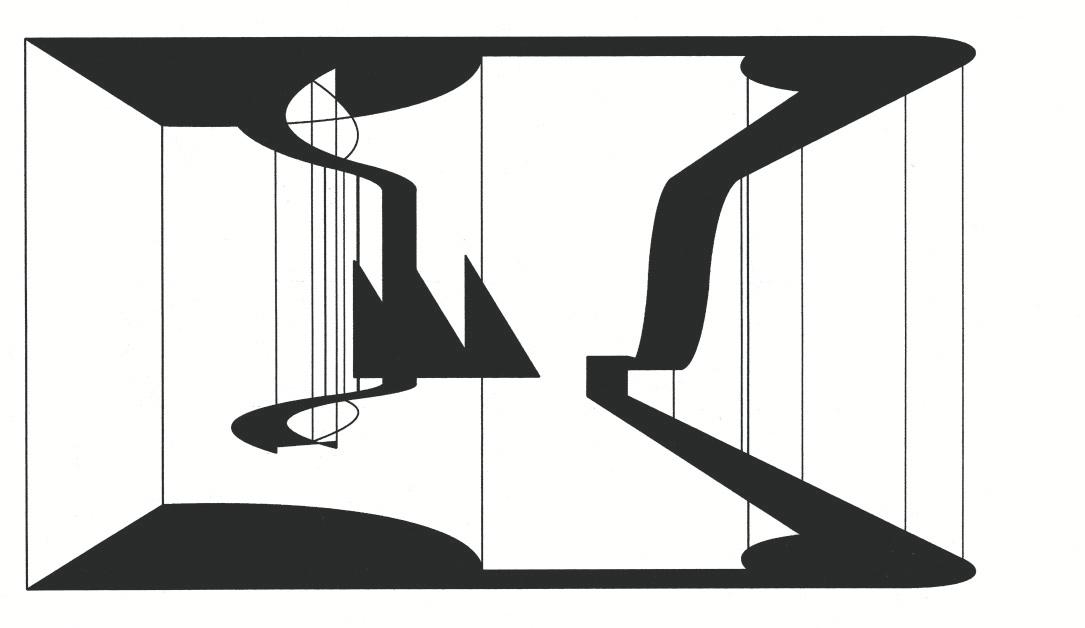

Inspired by methodologies of performance practice associated with notions of re-enactment, Butcher’s work seeks to reinvigorate questions around what might constitute a contemporary avant-garde. In his Notations series, he worked with a choreographer to create complex movement notations that were inspired by Bernard Tschumi’s seminal Manhattan Transcripts (1976–81) project.
generating an ongoing memorialisation rather than a frozen and fixed history.
In many ways the work of avant-garde groups like Superstudio and Archizoom predicted the digital worlds we inhabit today. As Damjan Jovanovic points out (pp 122–5), Superstudio’s expansive grid is now not only a visual feedback loop (as mentioned by Mimi Zeiger), but is also the organising principle of our digital world. His discussion of his Supersurface computer-game application as an extension of architectural media recalls William Menking's exploration of how the avant-garde imagination and working methods rupture the boundaries of the discipline.


Within this context it is both relevant and pressing to readdress questions of how architecture can once more align itself with a period that established, in the words of K Michael Hays, ‘a moment in history when certain ways of practicing architecture still had philosophical aspirations’.6 Re-imagining the Avant-Garde roots out the architects of today who hold on to this philosophical underpinning, whose work bounces back and forth between reference and reinvention, building the case that such practices define a significant moment in contemporary architectural discourse in which we can seek to cross temporal boundaries. 1
Continuing Contradictions
In re-imagining the avant-garde of the 1960s and 1970s, this 2 issue brings together contributors who establish resonance between this period and the cutting-edge design experiments we are seeing today. This historical moment continues to fascinate because, as Brugellis and Orazi continue, ‘the strength of those works lies precisely in their unabashed staging of the contradictions of those years, which are unfortunately the conflicts and contradictions of the present time and perhaps of the near future.’5
The consumerist society in which the avant-garde emerged – and in many cases directly critiqued – has expanded; the ecological crisis is reaching a zenith and social unrest has grown with the rise in populist politics.
Notes
1. The term ‘neo avant-garde’ as described by Peter Burger refers to cultural production that utilised forms from the historical avant-garde. The term ‘late avant-garde’ was developed by K Michael Hays in order to separate his understanding of this period of architectural production from others. See Peter Burger, Theory of the Avant-Garde, trans Michael Shaw, University of Minnesota Press (Minneapolis, MN), 1984, p 148, and K Michael Hays, Architecture’s Desire: Reading the Late Avant-Garde, MIT Press (Cambridge, MA), 2010, pp 4–12.
2. Pino Brugellis and Manuel Orazi, ‘Radicals Forever’, in Pino Brugellis, Gianni Pettena and Alberto Salvadori (eds), Radical Utopias, Quodlibet Habitat (Rome), 2017, p 38.
3. Hilde Heynen, Architecture and Modernity, MIT Press (Cambridge, MA), 1999, pp 4–5, 149–53.
4. Marco De Michelis, ‘Aldo Rossi and Autonomous Architecture’, in Terence Riley et al (eds), The Changing of the Avant-Garde: Visionary Architectural Drawing from the Howard Gilman Collection, Museum of Modern Art (New York), 2002, p 90.
5. Brugellis and Orazi, op cit
6. Hays, op cit, p 1.
Text © 2019 John Wiley & Sons Ltd. Images: p 6 © Perry Kulper; p 7 Dogma in collaboration with OFFICE Kersten Geers David Van Severen; p 8(t) © raumlaborberlin / Victoria Tomaschko; p 8(b) MAXXI National Museum of the XXI Century Arts, Rome MAXXI Architecture Collection; p 9 Drawing by Curtis Schreier. Image courtesy of the University of California, Berkeley Art Museum and Pacific Film Archive; p 10(t) © Luke Caspar Pearson; p 10(b) © Studio Andrea Branzi; p 11 © Jimenez Lai; p 12 Courtesy the artist and Herald St, London; p 13 © Matthew Butcher
Matthew Butcher, Movement Notation 004, 2008
Superstudio, Passiflora lamp, manufactured by Poltronova, 1968
This lighting fixture comes from a painted cardboard prototype made for the 1966 exhibition ‘Superarchitettura’ at Galleria Jolly in Pistoia. The cardboard was replaced by transparent plastic, transforming Passiflora into what Poltronova’s marketing materials describe as ‘a luminous truncated column: a column whose deformed profile wavers between natural and artificial, in a game of allusions and ambiguities’.
William Menking
Key avant-garde players are often assumed to be divorced from the reality of practice. In the case of Superstudio, this assumption is wildly inaccurate.
William Menking, co-founder and Editor-in-Chief of The Architect’s Newspaper and Professor at Pratt Institute, New York, coorganised the 2003 exhibition ‘Superstudio: Life Without Objects’ with Peter Lang. Here he puts right some myths about the nature of this well-known but much-misunderstood Florentine collaborative, setting it in the context of the intellectual and industrial climate of 1960s Italy, and exploring how its approach can inspire those seeking to rethink practice today.
The architect’s suicide and the disappearance of architecture are two equivalent phenomena: to work towards the one or the other is only a question of quantity. In both cases, it means eliminating the formal structures connected to the artificial scale of values.
In this sense, our work has used the instruments of architecture in a contrary fashion, gradually, through absurdity, showing its uselessness, its falsity and its immorality.
—Adolfo Natalini, Architectural Association School of Architecture lecture, London, 3 March 19711
It is now over 10 years since ‘Parametricism’ was declared ‘the great new style after modernism’.2 But while the role of computation in experimental material research and design is undeniable, the application of the computer to the design and production of buildings has also facilitated an increased regimentation and corporatisation of design practice and architectural production. In day-to-day practice the working environment in the typical architect’s office has increasingly become one of disconnection, repetition of labour, lack of cooperation and, in the long term, dehumanisation and a loss of cognitive skills. The issues of architectural labour in a globalised economy are among the most important for young practitioners and are the derivation of research and advocacy groups like the American groups The Architecture Lobby and Who Builds Your Architecture?.3



Many firms are trying to rethink how their highly organised command and control structures might be rearranged to better handle the massive information flows now available through distributed computing, autonomous modelling systems and artificial intelligence coming into their offices. But these firms are usually reinforcing their existing structure, rather than thinking more creatively how best to create a better, more equal shared working culture. This shift from a traditional architectural command-and-control structure to a less corporate model requires a total cultural change, and most firms are not able or are unwilling to make this leap in how work is carried out in daily practice.
New Models of Architectural Labour
Many young architects are pushing back against this corporate structure and creating new, less hierarchical modes of practice. Perhaps because they are newly formed, more
Cover of 2, no 12, 1971
The cover photo shows Superstudio in their office at 1 via di Bellosguardo, Florence. From left to right: Cristiano Toraldo di Francia, Alessandro Magris, Roberto Magris, Adolfo Natalini, Gianpiero Frassinelli and Alessandro Polli. On the table is their purple Hidden Architecture, published in Design Quarterly in January 1971.
attuned to the possibilities of a shared working environment, working outside the market or simply desiring a more equal decision-making process, many are creating new forms of professional practice. These studios realise that the possibilities of shared practice are actually enhanced because of the computer.
New approaches to architectural labour can be seen in various forms in the work of two international groupings of like-minded designers. One group might include Sam Jacob in London, Olalekan Jeyifous in Brooklyn, and Warehouse of Architecture and Research (WAR) in Rome. This is the ‘digitally averse’ group that Mario Carpo derisively calls ‘the Post-digitalists’ or the PoDigs, though these practices and individuals have more refined and radical notions of computation and culture than Carpo would allow.4
A second group proposing new models of work are collaboratives like raumlabor (in Berlin), Assemble (in London), Crimson (in Rotterdam), FACE Design (in New York) and Traumnovelle (in Brussels). These groups are fluid and multidisciplinary in nature, often made up of not only architects, but informal groupings of social scientists, artists and craftspeople. They are frequently professionals inexperienced in design studio culture, formed and hardened in architecture schools, and they expect a decision-making process that works horizontally across production and research decisions, not top-down or hierarchical. The groups all claim to champion interdisciplinary, often open-system practice with architecture at the centre of their projects.
Warehouse of Architecture and Research (WAR), Il Dramun, 2018
Il Dramun, or ‘drama by moonlight’, is WAR’s attempt to creatively represent one of its housing projects – currently ongoing near the cities of Pesaro and Urbino – in comic-book story form to reflect its architectural design in a way that captures attention, evocative of the soap opera’s simple storytelling. Although digitally produced, it is clearly influenced by the storyboard-form drawings of Superstudio as presented, for example, in their Fundamental Acts (1971–3).
A summer learning centre in a rainwater basin, designed as a place where transdisciplinary research teams consider the complex questions of urban practice like how cities might cope with risks, strains and chances of global warming, resource shortages, superdiversity and hyper-accelerated development.
raumlabor, Floating University, Berlin, 2018
Traumnovelle, Ode to Joy, 2018
Traumnovelle describe themselves as a ‘militant faction’ of three Belgian architects. They, like Superstudio, claim to follow a multidisciplinary approach with ‘architecture at the crossroads’ and acknowledge their landscape collage technique.
History of Non-Traditional Practice
This idea of a group architectural practice, where individuals bring different skills and abilities into a collaborative design process, goes back to at least the 1960s and groups like Archigram (in London), Ant Farm (in San Francisco), Utopie (in Paris) and others. These media-savvy groups remain role models for their powerful utopian image making, but also for their multidisciplinary approach and working structure. Today’s younger practices and figures seeking new ways of work all look back, often romantically, to the period of the 1960s and 1970s for inspiration, and to the Italian ‘design Radicals’ – particularly Superstudio, founded in Florence in 1966 by Adolfo Natalini and Cristiano Toraldo di Francia.5 Jacopo Costanzo, from the Roman group WAR, claims a generational affinity with Superstudio and says ‘we learned from them to question the system, to take care with storytelling and how to represent projects’.6 But he also believes the ‘heterogeneity of the Florentines’ working studio method’ is a crucial part of their legacy for current generations.7 ‘They were,’ he says ‘complex and contradictory as a team, with deep differences, but every project they made was strong, clear and synthetic’.8 Beyond the images they produced, what makes Superstudio’s working method and practice relevant to today’s practitioners? It is important first to put right a widespread misconception about how the Italian group practised from their founding until 1973, when they entered into the larger collaborative design group Global Tools and began to break apart as a functioning collective. Benjamin Foerster-Baldenius, from raumlabor, admires Superstudio and says ‘yes 70s utopian groups have influenced us –it’s obvious, no? The difference is that we work out there in reality.’9 This idea that Superstudio did not work ‘out there in reality’ and focused only on theoretical propositions and later art installations is a common misunderstanding about the Florentines, fed by statements of theirs like the one calling ‘for the architect’s public suicide’ or when they declared ‘design must disappear, we can live without architecture’.10
Superstudio, Competition design for a school in La Spezia, Italy, 1968
Superstudio as a professional office entered competitions and hoped to win and build their designs. This drawing and collage illustrates their Continuous Monument grid and their ‘theory-practice-theory check’ way of working.
Superstudio, Collage of the Superstudio office at 1 via di Bellosguardo, Florence, 1973
Created for an exhibition at the Neue Galerie Graz, Austria, this is a theoretical not actual depiction of Superstudio’s working office. Despite their reputation as theorists, they are pictured here as practising architects.
Superstudio, Design for a hotel in the Coliseum, Rome, 1969
Superstudio’s building project is clearly unbuildable because of its location in the Roman Coliseum but a concept that is entirely realisable.
Labour Inside Superstudio
During the preparation of the catalogue for the exhibition ‘Superstudio: Life Without Objects’, which was first shown at London’s Design Museum in 2003, multiple conversations with members of the group – particularly Gianpiero Frassinelli and Adolfo Natalini11 – revealed that while their work has used the instruments of architecture in a contrary fashion, as a working group they intended to transform architecture from inside the profession and wanted to practise ‘architecture’.12
They were not proposing that architects give up on the profession, as their contemporary critic Manfredo Tafuri argued, or become artists or anthropologists.13 It is easy to read their 1973 Project Zeno as a call for designers to focus on planning or anthropology, or the 1978 installation The Wife of Lot as architects working as artists at the Venice art biennale. Peter Lang points out how Superstudio differed from the other Florentine Radicals:
Superstudio embarked on a ‘classical’ architectural trajectory, effectively campaigning to destabilize modern architecture while remaining within the enlightenment language of perspectival space … they did not … seek to challenge the conventions of representation, or the projection of two-dimensional singular ocular perspective, but to subvert the principles of architecture within this convention.14
Superstudio,
Table, manufactured by Zanotta, 1973
The table was presented at the Neue Galerie Graz, Austria and then went into commercially successful production – an illustration of Superstudio’s ‘theory-practice-theory check’ which stemmed from a combination of the particular conditions of craft production and the overheated intellectual atmosphere in Italy at the time.
Italian Architectural Education in the 1960s
Italian architectural education in the 1960s was unique and, with no centralised education or professional standards in place, each school, as Peter Lang argues, had its ‘own archaic system’ that ‘effectively managed to create a sort of permanent antagonistic relationship between a cast of characters that included the administrations, the faculty the students and that carried on throughout most of the 1960s’.19 Located in major urban centres – Rome, Milan, Venice and Florence – each was dominated by local architects and intellectual figures. In Rome, Bruno Zevi created a school inspired by the organicism of American architect Frank Lloyd Wright (1867–1959); Milan focused on industrial production; and Venice was under the influence of the historical and theoretical writings of Manfredo Tafuri. Florence, dominated by a conservative local profession and ancient faculty, had its own dynamic that included the student occupation of administrators’ offices (including by several of the Superstudio members) and the creation of a council of students and faculty. What made Florence unique was that the council’s suggestions were taken up by faculty members like Leonardo Ricci and Leonardo Savioli, and this introduced an entirely new sensibility to the university’s classes.20 As Peter Lang writes, it kept education ‘less concerned with an ideologically driven socially conditioned architecture … and far more interested in investigating new cultural phenomena and their impact on establishing new building technologies’.21
In fact, Superstudio’s ubiquitous black-on-white grids, used so powerfully in their Continuous Monument series (1969), might be understood as refined architectural language used to poetically communicate their thinking with other designers. Given the experiments in perspective by architects and artists in Renaissance Florence, the use of the grid had a special resonance for the members of the group. The 1971–3 Superstudio series Fundamental Acts (Life, Education, Ceremony, Love, Death), they claim in Casabella magazine, is a plea specifically to architects ‘to engage or re-engage in the profession’, and they emphasised the ‘fundamental themes of our life’.15 Further they conclude the Acts by stating ‘the attempt to regenerate architecture both anthropologically and philosophically becomes the core of our reductive process’.16 Even their collaboration in the 1973 super-group Global Tools can be understood as a last attempt to reform, not leave, the profession.
In order to understand Superstudio’s formation as a collective it is important to be aware that it came together at the time of Italy’s ‘economic miracle’.17 This was the time of the creation of a consumer and rebellious youth culture in the country and the specific conditions of Italian ‘collective action’.18 But to understand Superstudio’s ‘classical trajectory’, it is more important to go back to their founding at the University of Florence and the special architectural culture of the Tuscan city.
In particular, Ricci’s hands-on experimental workshops promoted a multi-dimensional approach, including broad freedoms in composition strategies, materials, sculpture, film and music. Cristiano Toraldo di Francia claims this approach shook up the school and because the students were encouraged to take education into their own hands Superstudio formed as a collaborative focusing on theoretical media experiments, proposals and installations.22 ‘Radical Architecture,’ Frassinelli claimed, ‘was born in the occupied university’.23
In addition, Florence was home to a lively cultural, publishing and art scene. Maria Gloria Bicocchi’s avant-garde gallery Centrodiffusionegrafica brought international artists to Florence including those featured in the New York-based magazine Avalanche, such as the Americans Dennis Oppenheim, Allan Kaprow, Vito Acconci and Bill Viola. Their presence served as inspiration for the Superstudio architects to remain professionals while addressing important contemporary social issues. Bicocchi (whose gallery assistant was the partner of Frassinelli) says about this period in Florence:
I think that everyone in Florence in those days (1971/74) was connected and influenced each other, centrodiffusionegrafica without Schema Zona, Superstudio, UFO, Archizoom and all the atmosphere of experimental culture would probably have not existed one without the other … we shared artists, exhibitions and ideas. We were very much tuned together!24
Theory-Practice-Theory Check
Further, in the period when Superstudio produced their most important theoretical and artistic work they were simultaneously designing and building nightclubs, banks, private houses, furniture, lamps and even railway carriages. In this particularly Italian condition, as Lang notes, ‘the process developed into a series of checks and balances whereby the theory engendered the production, and [was] subsequently re-theorised, controlled and modified’.25 Superstudio’s black-on-white Continuous Monument grid, for example, became a commercially successful line of tables, lamps and luxury household objects. Natalini claims Italian architects focused on designing luxury goods because so many were unemployed. In the Florence School of Architecture, he goes on, there were ‘6,000 students, and architects in Italy are in charge of only 25% of the total built volume of buildings … so there was little work for these professionals’. The Italian ‘furniture industry’ had only two firms with more than 500 employees, while its many small independent craft workshops allowed ‘an ample margin of little experiments’.26 Natalini calls this the ‘theorypractice-theory check’ that arose in this special condition of craft production in Italy and the overheated intellectual atmosphere of the period. But this ‘overheated atmosphere’ began to play itself out by about 1972, when the Radicals were put on an international stage at the Museum of Modern Art in New York for the exhibition ‘Italy: The New Domestic Landscape’.27 In addition to being included in this seminal exhibition, Superstudio continued to produce key works that year, as well as help co-found the short-lived open educational experimental workshop project Global Tools. Intended to be a revolutionary institution, it hoped to integrate education into the daily life of the population. This workshop was intended to be ‘devoted to the formation of a school in Florence to nurture the creative facilities of every single human being and bridge the alienating gap that has taken the form between the work of the hands and that of the brain’, and ‘behaviors and gestures whose mere memory risks being erased by the logic of specialization, speed, and economic efficiency which characterize advanced capitalism’.28
This penultimate attempt by Superstudio in the Global Tools collaborative to reform the profession, brings us back full circle to the current practice of corporate architecture and the concentration on computer algorithms so prevalent in design practice today. The Florentines’ call to nurture the creative facilities of human beings ‘stifled by specialization and the frenzy to achieve efficiency’ perfectly describes the working conditions of today’s digital design environment.29 If we fixate on Superstudio’s compelling graphic images and ignore their social conception of labour and working, we miss the truly ‘radical’ nature of their project. It is imperative that the contemporary generation of critical practitioners continue to reform the meaning of work and labour begun by the Radicals nearly five decades ago. 1
Text © 2019 John Wiley & Sons Ltd. Images: pp 14-15 Courtesy of Poltronova; p 17(t) © Warehouse of Architecture and Research; p 17(b) © © raumlaborberlin/Victoria Tomaschko; p 18(t) © Traumnovelle; p 18(b) Image courtesy Drawing Matter Collections. Copyright the Architect; p 19(t) Courtesy of Superstudio; p 19(b) © MAXXI National Museum of the XXI Century Arts, Rome MAXXI Architecture Collection; p 20 © Galerie Graz Universalmuseum Joanneum, Austria. Photo J. Koinegg/UMJ; p 21 © Mondadori Portfolio/Electa/Marco Covi
Notes
1. Peter Lang and William Menking, Superstudio: Life Without Objects, Skira (Milan), 2003, p 31.
2. Patrik Schumacher, The Autopoiesis of Architecture, Volume 1: A New Framework for Architecture, John Wiley & Sons (Chichester), 2011.
3. See https://architecture-lobby.org and http://whobuilds.org/.
4. Mario Carpo, ‘Post-Digital “Quitters”: Why the Shift Toward Collage is Worrying’, Metropolis, 26 March 2018; www.metropolismag.com/architecture/post-digital-collage.
5. Casabella, no 367, 1972. There is debate about when the term ‘Radical Design’ was first used. I refer to its use in Casabella
6. Email exchange with Sam Jacob, 13 November 2018.
7. Email exchange with Jacopo Costanzo, 19 November 2018.
8. Ibid
9. Email exchange with Benjamin Foerster-Baldenius, 13 November 2018.
10. Lang and Menking, op cit, p 31.
11. Ibid, pp 31–51.
12. Ibid, p 44.
13. Manfredo Tafuri, ‘Design and Technological Utopia’, in Emilio Ambasz (ed), Italy: The New Domestic Landscape, exhibition catalogue, Museum of Modern Art (New York), 1972, pp 388–404.
14. Lang and Menking, op cit, p 44.
15. Casabella, no 367, July 1972, pp 16–26.
16. Ibid
17. Paul Ginsborg, A History of Contemporary Italy: Society and Politics 1943–1988, Penguin (London), 1990, p 212.
18. Ibid, p 298.
19. Lang and Menking, op cit, p 39.
20. Marie Theres Stauffer, ‘Utopian Reflections, Reflected Utopias: Urban Designs by Archizoom and Superstudio’, AA Files, 27, 1994, pp 23–36.
21. Lang and Menking, op cit, p 40.
22. Ibid, p 46.
23. Ibid, p 40.
24. Email exchange with Maria Gloria Biocchi, 14 November 2018.
25. Lang and Menking, op cit, pp 46–7.
26. Ibid, p 60, quoting Adolfo Natalini.
27. Ambasz, op cit
28. Valerio Borgonuovo and Silvia Franceschini, Global Tools 1973–1975, SALT (Istanbul), 2015, p 12 (originally published 1974); http://saltonline.org/media/files/ globaltools_scrd.pdf.
29. Ibid.
Casabella, no 367, July 1972
The then editor of Casabella Alessandro Mendini, who was also the author of the cover illustration, made the magazine available for the Global Tools group to publish its manifesto of ‘the rejection of work as a necessary condition to the recovery of a meditative civilization’.
SOME AFFINITIES BETWEEN PURE ICONS, HARDCORE ARCHITECTURE AND OOO
Sarah Deyong
Inspired by late-Renaissance still-life paintings, these large light fixtures instantiate the irreducibility of form to its many fields: robots, tulips, lights.
Mark Foster Gage, Robotic Tulip Lamps, 2010
Sarah Deyong, an associate professor and director of the architecture programme at the University of Nebraska–Lincoln, maps the complex relationships contemporary theorists and practitioners have with concepts of ‘form’, which can be traced back to previous avantgardes. She uses the work and publications of architectural collective WAI Think Tank as a microcosm of this complex discourse.
As history tells us, architectural ideas tend to cycle through periods. Mid-century, the dominant thinking was ‘form follows function’. Circa 1968, the postmodern movement disrupted that formula. Whereas the dogmas of High Modernism foregrounded method, research and process at the expense of form, Postmodernism debunked the scientific rationale behind an all-too-simple functionalism. Instead it mined history’s treasure trove of shapes, forms, figures and compositions, and found a taxonomy of building typologies. In eschewing design method, architectural theory decoupled itself from the rational methods of modern science and renewed its vows with architectural history. Specifically, it rewrote the terms of its engagement under the spectre of what Manfredo Tafuri denigratingly called ‘operative criticism’.1 Because the so-called operative critics – Bruno Zevi, Sigfried Giedion, Nikolaus Pevsner and Emil Kaufmann – had played fast and loose with history in order to promote the ideology of modern science, architectural theory strove for a more rigorous alliance with history while problematising all claims to truth.
And yet, there was a certain irony in recuperating building typologies. No matter how much one unpacked the 18th-century definition of typology – museums, theatres, prisons, hotels, banks and so on – a building’s form was indelibly associated with its function, and hence, from a historical perspective, the roads still led to the artifice of this conjunction. Consequently, when it came to advancing a new position, it was the architect-theorist, rather than the historian, who proved particularly decisive. In his treatise The Architecture of the City (1966), Aldo Rossi gave typologies an ahistorical meaning. Reflecting on place, collective memory and the multiplicity of functions a building type like the Palazzo della Ragione (1219) in Padua has held in its lifetime, he succinctly argued that form was independent of function.2
The postmodern emphasis on form remains current to this day and has important implications for the discipline. For example, the recent work of Office Kovacs, and especially their Proposal for Collective Living (Chicago Architecture Biennial, 2017), underscores the importance of form in everyday life via the history of architecture.3 This position effectively challenges the reactionary assumption that the primacy of form comes at the expense of function. In contemporary discourse, form is simple yet surreptitiously complex. On one hand, it is irreducible; its meaning is boundless. And on the other, form is projective; it harbours new agencies.4
While it may be too early to tell whether a paradigm shift towards a genuinely new approach to form has actually occurred, aspects of its various tendencies have already been documented on the pages of Log and ARCH+, for example, and the main protagonists have been recognised by enough of a critical mass to constitute a movement tied to the first two decades of the 21st century. As with
all movements, the origins are many, but some of the more visible artefacts would definitely include Robert Somol’s essays ‘12 Reasons to Get Back into Shape’ (2004) and ‘Green Dots 101’ (2006);5 Jimenez Lai’s graphic novel Citizens of No Place (2010);6 and the Possible Mediums project co-founded by Kristy Balliet, Adam Fure and Kyle Miller in 2013.7 Tangent to this cluster is the group of architectural theorists associated with the philosopher Graham Harman and object-oriented ontology (OOO),8 for example David Ruy, Mark Foster Gage, Tom Wiscombe and Todd Gannon. And coinciding with it is an array of early voices in Western Europe: François Blanciak’s Siteless: 1001 Building Forms (2008);9 the journal San Rocco (first issued in 2011); and Pier Vittorio Aureli’s The Possibility of An Absolute Architecture (2011).10
Office Kovacs, Proposal for Collective Living II (Homage to Sir John Soane), Chicago Architecture Biennial, Chicago, 2017
The intention of the proposal was to ‘make architecture from architecture’. In so doing, Office Kovacs appropriated the iconic section of Sir John Soane’s House and Museum, replacing its contents, a collection of antique artefacts, with new objects from popular culture. The drawing therefore rehabilitates the neoclassical figure of the architect as a collector of exotic shapes and forms to posit a renewed stance on architectural form-making.
WAI Think Tank, Understanding Pure Hardcore Icons, London, 2013
Published in Pure Hardcore Icons: A Manifesto on Pure Form in Architecture (2013), this conceptual drawing depicts a romantic landscape of idealised building forms.
Architectural form (and its companion space) is not only irreducible to many fields, it is also central to the discipline’s bid for alternative uses, programmes, narratives and agencies.
Hardcore Architecture
There are many entrances into this recent history of contemporary discourse, so the starting point of any narrative or line of thought is surely an arbitrary one. Here we will therefore begin with one of the lesser-known names, WAI Think Tank, founded in 2008 by Cruz Garcia and Nathalie Frankowski, whose appearance on the architectural stage bypassed the usual channels of legitimisation, as vetted by leading schools. Like the little magazines of the 1960s,11 the first issue of their journal What About It (2011) was completely self-produced. But by actively promoting their ideas through their own publications, exhibitions and blogs, they made a place for themselves in academic discourse. They participated in the ‘Archizines’ travelling exhibition curated by Elias Redstone in 2012; the Shenzhen-Hong Kong Bi-City Biennale of Urbanism and Architecture organised by Aaron Betsky and Urban-Think Tank in 2015; and the first Chicago Architecture Biennial in 2015, at the invitation of Graham Foundation director Sarah Herda.
What had earned WAI’s inclusion at these events was their manifesto statement on hardcore contemporary architecture, born in the aftermath of the economic crisis in 2008 in opposition to the massive proliferation of iconic buildings in cities like Dubai. However, WAI did not want to ‘kill form’, but to defend it from uncritical overuse. ‘The paradox of contemporary architecture is that even though it doesn’t have
Blanciak Studio, Pure Forms, University of Sydney School of Architecture, Design and Planning, Sydney, 2012
The studio here reversed the conventional sequence of the design process. Instead of beginning with research, Blanciak’s students began with an abstract form to find the building’s function retroactively. Student work by Mingze Sun, Zoe Mairs, Rod Watt, Nicolette Quittner, Cameron Halls, Dong Hee Kim, Stephen Clement, Yang Lu, Chun Suh and Kanru Yang.
a written manifesto … it does have a shared visual language; an unclaimed plot,’ they wrote.12 In so doing, they turned to the history of the discipline – particularly the pure forms and ‘abstract scrutiny’ of Kazimir Malevich and the Russian Suprematists – in order to make a case for contemporary architecture’s hardcore.
In their essay on ‘The Shapes of Hardcore Architecture’ (2011), WAI recalled an architectural event that encapsulates their thesis. That event was Peter Eisenman’s presentation of his office tower for the Max Reinhardt Schauspielhaus in Berlin in 1992 to ‘a battalion of … critics of intimidating gravitas’, including Rem Koolhaas, who was not convinced by Eisenman’s arguments, but had nevertheless found the looping form of his tower to be unspeakably beautiful. As we know, 10 years later, as WAI write, Koolhaas redeployed the looping form in his project for the CCTV building in China. They thus conclude: ‘The reappearance of the looping skyscraper reinforce[s] the idea that a tower could be done as a Moebius strip and, more importantly, that after the abolition of concepts like scale, function, site or program, architecture can assume any shape in any place.’13 Here we see an echo of Rossi’s notion of pure forms independent of their function, with the caveat that contemporary architecture does not limit its formal investigation to platonic solids, but wilfully expands on their abstract possibilities.
WAI Think Tank, San Juan Football School and Training Center, Puerto Rico, 2013
A single form integrates learning, living and training facilities in a boarding school to create a new model of educational institution focused on sports.
In this series of drawings, architecture is abstracted from the particularities of site, context and programme to celebrate the primacy of form and its endless diversification.

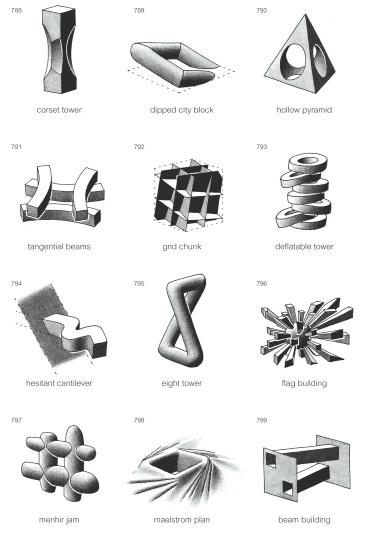
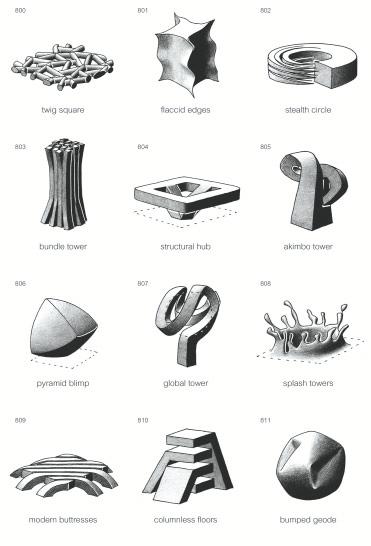

In this, WAI’s ‘hardcorism’ is preceded by Somol’s aforementioned essays, as well as by Blanciak’s Siteless. 14 A common origin is the larger Dutch context of progressive practice and its sphere of influence on the Continent (here one thinks of the large collection of icons on BIG’s homepage or Koolhaas’s boozine Content, which featured Somol’s 2004 essay). Paralleling WAI’s own desire to ‘explore the potential of architecture’s infatuation with form’, Blanciak similarly contends that ‘the exhaustion and exacerbation of architectural form could not be achieved without a certain acceptance of form as a primary component of architecture’.15 This view, he further argues, challenges the design process conceived as a linear investigation where form is narrowly and erroneously construed as a direct product of one’s preliminary research (data-driven architecture and evidence-based design). In teaching design studios, Blanciak breaks with the typical project pattern of ‘programme-plus-site-equals-form’, and reverse-engineers this design formula. He says: ‘This is where the intention of the studio connects with the modus operandi of SITELESS, as this traditional sequence is inverted in the brief; we start with form, then site, and the programme is to be determined through the project. Hence, the project becomes a tool for analysis.’16
Other affinities did not go unnoticed in academic periodicals, and in 2014 the Berlin journal ARCH+ published WAI’s work alongside that of Baukuh, OFFICE Kersten Geers David Van Severen, and Dogma (Pier Vittorio Aureli and Martino Tattara), whose members are all affiliated with San Rocco. The editors of ARCH+ had originally chosen the theme ‘New Postmodernists’ for their double issue, but then changed it to ‘Hardcore Architecture’, and in recognition of the original source, featured WAI’s collages on its covers.17 This change was fortuitous, since the notion of form constituting the discipline’s hardcore spoke less about historical influences à la
Postmodernism, such as Claude-Nicolas Ledoux and ÉtienneLouis Boullée, and more about a shared insight into the very act of design, an insight which, in Blanciak’s view, potentially reverses the failed equation of form follows function to function follows form.
The Irreducibility of Form to its Many Fields
In contemporary discourse, there are two positions that advance this insight, albeit in strikingly different ways. The first is Aureli’s consideration of an absolute architecture, and the second, object-oriented ontology. The point of this comparison does not rely so much on the projects associated with these viewpoints as on their respective notions on the autonomy of form, or in the case of the latter, the autonomy of the object. Whereas Aureli promotes a productive tension between architectural form and its urban context,18 Graham Harman speaks of the tension between the object and its sensual and affective qualities, and Todd Gannon, a sympathetic critic of OOO architecture, of the tension between abstraction and legibility.19 Regardless of the category – context, sensual affect or meaning – all seem to recognise that architectural form, its raison d’être, cannot be reduced to a field of relations, be it epistemological or phenomenological. And in OOO, this orientation is indebted to Martin Heidegger’s notion of tooling in Being and Time (1927).20 Drawing on Heidegger, Mark Foster Gage, for example, offers a concise definition of OOO directed at an architectural audience, which, in turn, informs works such as Valentine to Times Square (2009) and Robotic Tulip Lamps (2010) – projects that are very much about the discipline of architecture and its internal dialogue with abstract form, rather than with function and meaning.21 According to Heidegger, the absolute unknowability of a form is instantiated when a tool, like a hammer, breaks down. The hammer is no longer a tool for driving nails;
Spread from François Blanciak’s

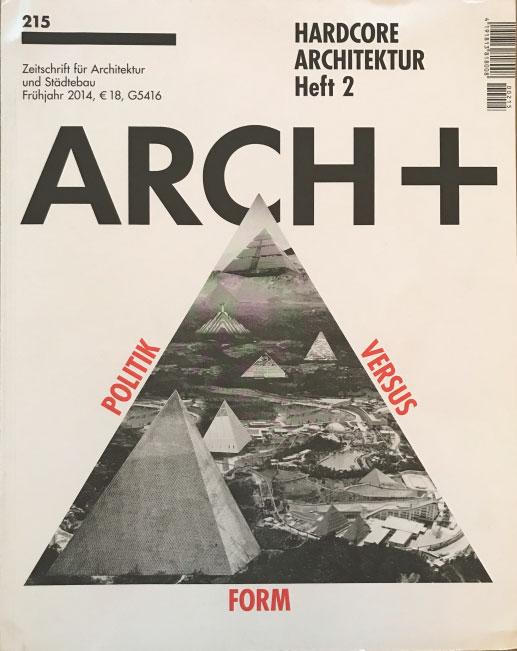

it withdraws, and as such becomes available for other things, like a doorstop (even though it is not a doorstop). When form is understood solely in terms of use, it is, in the words of Harman, overmined; and when it breaks, stops functioning, then its strangeness or unknowability appears. This unknowability and changeability are what compels us to return to it repeatedly. Paradoxically, then, it is because architectural form is irreducible to function, context, meaning, affect and so on that it is constantly redeployed. For Harman, moreover, not only is form unknowable (‘any attempt to get at form is an approximation’), so is space, for ‘it is never what is directly present’.22 Indeed, space is implied only through the presence of something else, and in architecture it is usually inferred by way of composition, as in a figure-ground or Boolean split. As such, one might think of architectural form (and its companion, space) not only in terms of its irreducibility to many fields (hammer, doorstop, robot, tulip, lights, chair, house), but also in terms of an iterative logic that asserts the primacy of form in support of architecture’s bid for alternative uses, programmes, narratives and agencies. 1
Notes
1. Manfredo Tafuri, Theories and History of Architecture [1968], trans Giorgio Verrichia, Harper & Row (New York), 1980, pp 141–70.
2. Aldo Rossi, The Architecture of the City [1966], trans Diane Ghirardo and Joan Ockman, MIT Press (Cambridge, MA), 1982, p 29.
3. See Dora Epstein-Jones and Bryony Roberts (eds), Log: The New Ancients, 31, Spring/ Summer 2014.
4. Sarah Whiting, ‘Whatever Happened to Projective Architecture?’, Footprint, 3/4, January 2009, pp 123–8.
5. Robert Somol, ‘12 Reasons to Get Back into Shape’, Content, Taschen (Cologne), 2004, pp 86–91, and ‘Green Dots 101’, Hunch, 11, Winter 2006–07, pp 28–37.
6. Jimenez Lai, Citizens of No Place, Princeton Architectural Press (Princeton, NJ), 2010.
7. See https://possiblemediums.wordpress.com, and also Matt Shaw, ‘Possible Mediums’, Domus, 19 February 2013: https://www.domusweb.it/en/architecture/2013/02/19/possiblemediums.html and Kelly Bair et al (eds), Possible Mediums, Actar (Barcelona), 2018.
8. See Graham Harman, Tool-Being: Heidegger and the Metaphysics of Objects, Open Court (Chicago, IL), 2002.
9. François Blanciak, Siteless, MIT Press (Cambridge, MA), 2008.
10. Pier Vittorio Aureli, The Possibility of an Absolute Architecture, MIT Press (Cambridge, MA), 2011.
11. On the little magazines of the 1960s and 1970s, see Beatriz Colomina and Craig Buckley (eds), Clip, Stamp, Fold, Actar (Barcelona), 2011.
12. Cruz Garcia and Nathalie Frankowski, ‘The Shapes of Hardcore Architecture’, What About It? (Beijing), 2011, p 21.
13. Ibid, pp 21–2.
14. Cited in Cruz Garcia and Nathalie Frankowski, ‘Interview with François Blanciak’, Pure Hardcore Icons: A Manifesto on Pure Form in Architecture, Artifice (London), 2013, pp 66–73.
15. Ibid, p 68.
16. Ibid, p 69.
17. Sabine Kraft, Nikolaus Kuhnert and Anh-Linh Ngo (eds), Hardcore Architecture, ARCH+ double issue, Spring 2014.
18. Aureli, op cit, p ix.
19. Todd Gannon et al, ‘The Object Turn’, Log, 33, Winter 2015, pp 87–8.
20. Martin Heidegger, Being and Time [1927], trans John Macquarrie and Edward Robinson, Basil Blackwell (Oxford), 1962.
21. See Mark Foster Gage, ‘Killing Simplicity’, Log, 33, Winter 2015; reprinted in Mark Foster Gage, Projects and Provocations, Rizzoli (New York), 2018, pp 34–40.
22. Graham Harman, Deep Vista Conference at Texas A&M University organised by Gabriel Esquivel, 20 June 2018: https://www.youtube.com/watch?v=zsrC8AQhu9M.
WAI Think Tank, Sphere City on the cover of the ARCH+ double issue on Hardcore Architecture, spring 2014
The cover image pays homage to the iconic sphere in the work of Claude-Nicolas Ledoux, Étienne-Louis Boullée, Richard Buckminster Fuller, Renzo Piano and others.
Text © 2019 John Wiley & Sons Ltd. Images: pp 22–23 © Mark Foster Gage; p 25 © Office Kovacs; pp 26, 27(l) © WAI Think Tank; p 27(r) © François Blanciak; p 28 © François Blanciak; p 29 Image © WAI Think Tank. Courtesy of ARCH+
WAI Think Tank, Pyramid City on the cover of the ARCH+ double issue on Hardcore Architecture, spring 2014
Conceptual collage of pyramidal buildings such as Buckminster Fuller’s Tetra City (1966), IM Pei’s Louvre, Paris (1989), Norman Foster’s Palace of Peace and Reconciliation in Kazakhstan (2006), and MVRDV’s renovation of the Enver Hoxha Museum in Albania (2018).
